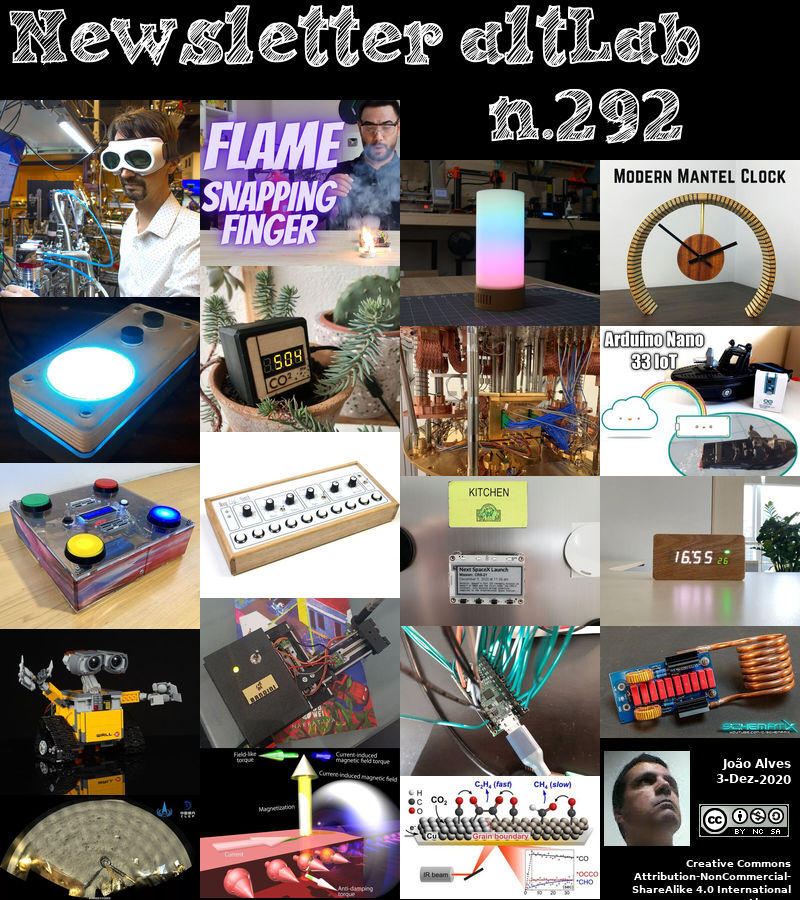2020-12-03 - Nº 292
Editorial
Esta é a Newsletter Nº 292 que se apresenta com o mesmo formato que as anteriores. Se gostar da Newsletter partilhe-a!
Todas as Newsletters encontram-se indexadas no link.
Esta Newsletter tem os seguintes tópicos:
Faz hoje anos que nascia, em 1616, o matemático inglês John Wallis. Ele foi responsável pela introdução do símbolo de infinito na matemática. Wallis era habilidoso em criptografia e descodificava mensagens monárquicos para os parlamentares durante a Guerra Civil. Posteriormente, ele foi nomeado para a Cadeira de Geometria Salvador em Oxford em 1649, uma posição que ocupou até sua morte mais de 50 anos depois. Wallis fazia parte de um grupo interessado em ciência natural e experimental que se tornou a Royal Society, então Wallis é um membro fundador da Royal Society e um de seus primeiros Fellows. Wallis contribuiu substancialmente para as origens do cálculo e foi o matemático inglês mais influente antes de Newton.
Faz também hoje anos que nascia, em 1753, o inventor britânico Samuel Crompton. Ele, durante a Revolução Industrial, criou a "mula giratória". O fio contínuo, forte e fino que foi capaz de girar foi um benefício para os fabricantes de tecido de algodão. Era chamado de "mula" porque era um híbrido das ideias de Richard Arkwright e James Hargreaves. A fiação tinha chegado à maioridade desde a ocupação doméstica até a produção da fábrica.
Faz igualmente hoje anos que nascia, em 1877, o inventor e pioneiro da aviação neozelandês Richard Pearse. Aos 21 anos, construiu uma oficina com uma forja e um torno para se tornar num inventor. A sua primeira patente foi um tipo de bicicleta. Em 1902, Pearse provavelmente tinha construído um motor leve de dois cilindros e primeiro avião a partir de bambu, aço tubular, arame e tela. Os relatos das datas e detalhes de seus voos variam porque não foram documentados, mas acredita-se que a 31 de Março de 1903 ele fez pelo menos uma descolagem propulsionada, embora não um voo controlado e sustentado, cobrindo talvez 350 metros antes de bater numa cerca alta. (Seria a quinta descolagem bem sucedida no mundo.) Ele fez outras invenções em sua vida.
Faz também hoje anos que nascia, em 1886, o fisico sueco Manne Siegbahn. Ele recebeu o Prémio Nobel de Física em 1924 pelas suas descobertas e investigações em espectroscopia de raios-X. Em 1914 ele começou os seus estudos na nova ciência da espectroscopia de raios-X que já tinha estabelecido a partir de espectros de raios-X que existiam duas 'conchas' distintas de electrões dentro dos átomos, cada uma dando origem a grupos de linhas espectrais, rotulados de 'K' e 'L'. Em 1916, Siegbahn descobriu uma terceira série, ou "M". (Mais foram encontrados mais tarde em elementos mais pesados.) Refinando o seu equipamento de raio-X e técnica, ele foi capaz de aumentar significativamente a precisão de suas determinações de linhas espectrais. Isto permitiu que ele fizesse correcções na equação de Bragg para difracção de raios-X para permitir os detalhes mais finos da difracção de cristal.
Faz igualmente hoje anos que nascia, em 1924, o cientista da computação norte-americano John Backus. Ele foi responsável pela invenção da linguagem de programação FORTRAN (FORmula TRANslation) em meados da década de 1950. Ele já tinha desenvolvido uma linguagem assembly para o computador 701 da IBM quando sugeriu o desenvolvimento de um compilador e linguagem de mais alto nível para o IBM 704. Como a primeira linguagem de programação de computador de alto nível, o FORTRAN foi capaz de converter fórmulas e expressões matemáticas padrão no código binário usado pelos computadores. Assim, um não-especialista poderia escrever um programa em palavras e símbolos familiares, e diferentes computadores poderiam usar programas gerados na mesma língua. Isto abriu caminho para outras linguagens de computador, como o COBOL, o ALGOL e o BASIC.
Faz também hoje anos que nascia, em 1933, o químico holandês Paul J. Crutzen. Ele recebeu o Prémio Nobel da Química de 1995 por demonstrar, em 1970, que compostos químicos de óxido de nitrogénio aceleram a destruição do ozono estratosférico, que protege a Terra da radiação ultravioleta do Sol. O seu trabalho, publicado em 1970, mostrou que os óxidos de nitrogénio NO e NO2 reagem de forma catalítica com ozono, acelerando assim a taxa de quebra de ozono para O2 na estratosfera. Estes óxidos de nitrogénio são formados principalmente pela decomposição do óxido nitroso (N2O) que se origina de transformações microbiológicas no solo. Ele dividiu o prémio com os químicos Mario Molina e F.Sherwood Rowland, que descobriram em 1974 que gases fabricados clorofluorcarbonetos (CFC) também contribuíam para o esgotamento do ozono.
Por fim, faz hoje anos que nascia, em 1942, o ceramista norte-americano Peter C. Schultz. Ele, trabalhando com os investigadores da Corning Glass Robert Maurer e Donald Keck, desenvolveu a fibra óptica, capaz de transportar 65.000 vezes mais informações do que o fio de cobre convencional, uma realidade prática. Em 1970, Maurer, Keck e Schultz projectaram e produziram a primeira fibra óptica com perdas ópticas baixas o suficiente para amplo uso em telecomunicações. A fibra óptica é feita de dióxido de silício (areia pura) e pó de quartzo para fazer uma haste oca. Um gás aquecido é então soprado através da haste oca para deixar um fino depósito de vidro ultra-puro no interior da haste. O tubo é então aquecido e colapsado numa haste sólida com núcleo de vidro ultra-puro. Estas "hastes" de vidro são mais finas que um cabelo e podem dobrar, elas são muito resistentes.
Faz hoje 110 anos que as luzes de Néon desenvolvidas pelo físico francês Georges Claude, fizeram a sua estreia pública no Paris Motor Show. A luz colorida é produzida através da passagem da corrente eléctrica através de gases inertes num tubo de vácuo. Este efeito foi produzido após décadas de experiências para criar uma alternativa prática à iluminação incandescente. A sinalização de néon chegou à América quando Earle C.Anthony comprou dois cartazes por US$ 2.400 em Paris e as instalou na sua concessionária Packard em Los Angeles. O gás néon brilha um vermelho-laranja ardente; árgon é lavanda macia; gás árgon melhorado com mercúrio é azul brilhante. Mais de 150 cores podem ser alcançadas combinando diferentes gases (incluindo crípton, xénon e hélio) e fósforos que revestem o interior do tubo de vidro.
Nesta semana que passou o Telescópio do Observatório de Arecibo em Porto Rico entra em colapso meses após cabos quebrarem. O enorme e já danificado radiotelescópio Arecibo entrou em colapso completamente depois da sua plataforma receptora de 900 toneladas cair sobre o prato do reflector abaixo. O telescópio desempenhou um papel fundamental em descobertas astronómicas por mais de meio século e entrou na cultura popular com aparições em filmes de Hollywood como GoldenEye e Contact. A Fundação Nacional de Ciência dos EUA (NSF) já tinha anunciado anteriormente que o Observatório de Arecibo seria fechado.
Também nesta semana que passou a sonda Chang'e-5, lançada na passada semana, completa a recolha de amostras da superfície Lunar, onde aterrou com sucesso. As amostras foram embaladas e armazenadas no dispositivo de armazenamento. Posteriormente a sonda já saiu da superfície lunar estando neste momento a caminho da Terra. Passaram mais de 40 anos desde que amostras lunares foram trazidas pela última vez de volta à Terra.
Na Newsletter desta semana apresentamos diversas noticias, artigos científicos assim como projetos de maker. É apresentado o livro The Official Raspberry Pi Handbook 2021.
 João Alves ([email protected])
João Alves ([email protected])
O conteúdo da Newsletter encontra-se sob a licença  Creative Commons Attribution-NonCommercial-ShareAlike 4.0 International License.
Creative Commons Attribution-NonCommercial-ShareAlike 4.0 International License.
Novidades da Semana

Arecibo Observatory telescope collapses in Puerto Rico months after cables snap
"A huge, already damaged Arecibo radio telescope in Puerto Rico has completely collapsed after its 900-ton receiver platform fell onto the reflector dish below. The telescope has played a key role in astronomical discoveries for more than half a century and entered popular culture with appearances in Hollywood films like GoldenEye and Contact. The US National Science Foundation (NSF) had earlier announced that the Arecibo Observatory would be closed. An auxiliary cable snapped in August, causing a wide gash on the 305-metre-wide dish and damaging the receiver platform that hung above it. Then a main cable broke in early November. 'A huge loss' The collapse stunned many scientists who had relied on what had been the largest radio telescope in the world." [...]
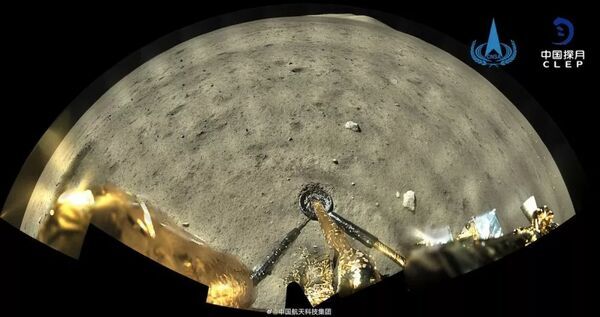
The Chang'e-5 probe completes automatic lunar surface sampling and encapsulates the payload and works normally
"At 22:00 on December 2, after about 19 hours of lunar surface work, the lunar exploration project Chang'e-5 probe successfully completed the automatic sampling of the lunar surface, and the samples were packaged and stored in the storage device carried by the ascender in a predetermined form. During the sampling and packaging process, the scientific and technical personnel simulated the geographic model of the sampling area according to the data returned by the detector in the ground laboratory and simulated sampling throughout the entire process, providing an important basis for sampling decision-making and operations in each link. The lunar soil structure detector and other payloads equipped with the lander are working normally, and scientific surveys are carried out as planned, and sampling information support is provided. Automatic sampling is one of the core key links of the Chang'e-5 mission. The detector withstands the test of lunar surface temperature exceeding 100 degrees Celsius, overcomes the constraints of measurement and control, illumination, and power supply, and relies on a newly developed extraterrestrial celestial body sample collection mechanism , Separately collect lunar samples by mechanical arm surface extraction and drilling tool drilling, realizing multi-point and diversified automatic sampling. Among them, the drilling tool drilled the lunar soil samples under the lunar surface, and the robotic arm carried out various sampling on the lunar surface with the support of the end sampler." [...]
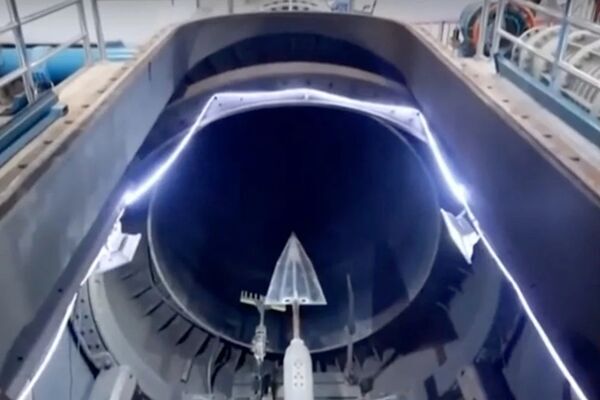
Chinese team test jet engine ‘able to reach anywhere on Earth within 2 hours’
"Prototype flown in hypersonic wind tunnel simulating flight conditions at nine times the speed of sound The ‘sodramjet’ engine could offer the biggest hope so far of commercial flight reaching hypersonic speed, the scientists say Chinese scientists have built what they claim is a revolutionary plane engine for Mach 16 flight. An aircraft powered by the engine could reach anywhere in the world within two hours, they said. The test flight of a prototype in a hypersonic wind tunnel in Beijing suggested unprecedented performance in terms of thrust, fuel efficiency and operational stability. The engine could also serve “reusable trans-atmospheric planes [that will] take off horizontally from an airport runway, accelerate into orbit around the Earth, then re-enter into the atmosphere, and finally land at an airport,” said the scientists, led by Professor Jiang Zonglin of the Chinese Academy of Sciences’ Institute of Mechanics in a peer-reviewed paper published in the Chinese Journal of Aeronautics on Saturday. The futuristic engine has a relatively simple design. It consists of three major components without any moving parts: a single-stage air inlet, hydrogen fuel injector and combustion chamber." [...]
Outras Notícias

Intel Debuts 2nd-Gen Horse Ridge Cryogenic Quantum Control Chip
"At an Intel Labs virtual event today, Intel unveiled Horse Ridge II, its second-generation cryogenic control chip, marking another milestone in the company’s progress toward overcoming scalability, one of quantum computing’s biggest hurdles. Building on innovations in the first-generation Horse Ridge controller introduced in 2019, Horse Ridge II supports enhanced capabilities and higher levels of integration for elegant control of the quantum system. New features include the ability to manipulate and read qubit states and control the potential of several gates required to entangle multiple qubits. “With Horse Ridge II, Intel continues to lead innovation in the field of quantum cryogenic controls, drawing from our deep interdisciplinary expertise bench across the Integrated Circuit design, Labs and Technology Development teams. We believe that increasing the number of qubits without addressing the resulting wiring complexities is akin to owning a sports car, but constantly being stuck in traffic. Horse Ridge II further streamlines quantum circuit controls, and we expect this progress to deliver increased fidelity and decreased power output, bringing us one step closer toward the development of a ‘traffic-free’ integrated quantum circuit.” –Jim Clarke, Intel director of Quantum Hardware, Components Research Group, Intel Today’s early quantum systems use room-temperature electronics with many coaxial cables that are routed to the qubit chip inside a dilution refrigerator." [...]

Microchip’s Low-Power Radiation-Tolerant (RT) PolarFire FPGA is Available in Engineering Silicon and On a Path to Full QML Class V Spaceflight Qualification
"Customers can prototype with the same FPGA silicon and package that is now headed for space qualification Microchip Technology (Nasdaq: MCHP) today announced it is shipping engineering silicon for its RT PolarFire® Field Programmable Gate Array (FPGA) while the device is being qualified to spaceflight component reliability standards. Designers can now create hardware prototypes with all the same electrical and mechanical performance that the space-qualified RT PolarFire FPGAs will provide for high-bandwidth on-orbit processing systems with industry-low power consumption and the ability to withstand radiation effects in space. “This is a major milestone as we release RT PolarFire FPGA engineering silicon to our customers and begin the spaceflight qualification process through full QML Class V standards,” said Bruce Weyer, vice president of Microchip’s FPGA business unit. “Many of our customers have already jump-started satellite system payload development using our commercial PolarFire MPF500T FPGAs and now all prototyping can be done with silicon that will be identical in form, fit and function to our eventual flight-qualified RT PolarFire FPGAs.” Microchip is qualifying its RT PolarFire RTPF500T FPGAs to Mil Std 883 Class B, QML Class Q and QML Class V -- the highest qualification and screening standard for monolithic integrated circuits in space. Designed to survive a rocket launch and meet demanding performance needs in space, RT PolarFire FPGAs are ideal for applications including high-resolution passive and active imaging, precision remote scientific measurement, multi-spectral and hyper-spectral imaging, and object detection and recognition using neural networks. These applications require high levels of operating performance and density, low heat dissipation, low power consumption and low system-level costs." [...]

NXP Extends its Leadership in 5G Infrastructure with 2ⁿᵈ Generation RF Multi-Chip Modules That Amp Up Frequency, Power and Efficiency
"NXP Semiconductors N.V. (NASDAQ: NXPI) today announced the availability of its 2nd generation of comprehensive Airfast RF power Multi-Chip Modules (MCMs) designed to support the evolution of 5G mMIMO active antenna system requirements for cellular base stations. Focused on accelerating the coverage of 5G, the new all-in-one power amplifier module family is based on NXP’s latest LDMOS technology that offers higher output power, extended frequency coverage, and higher efficiency—all within the same footprint as NXP’s previous generation of MCMs. The new AFSC5G26E38 Airfast module is a prime example of the increased performance delivered in the 2nd generation MCM family. The device delivers 20% more output power compared to the previous generation, addressing the need for broader 5G coverage per base station tower, without increasing the radio unit size. It also features a power-added efficiency of 45%, 4 points higher than the previous generation for an overall reduction in the 5G network electricity consumption. Highlighting the performance of NXP’s latest LDMOS generation in high frequencies, the new AFSC5G40E38 addresses the 5G C-band from 3.7 to 4.0 GHz and has recently been selected by NEC Rakuten Mobile in Japan." [...]

STMicroelectronics Reveals Compact 60V DC/DC Converters Featured for Extra Flexibility
"The STMicroelectronics L7983 is a compact, 3V-60V, 300mA synchronous DC/DC buck converter with flexible, dynamic-mode selection to satisfy noise-sensitive applications and maximize efficiency at light load. Special ST innovations engineered into the L7983 allow control of the low-side power MOSFET to provide a low-noise mode (LNM) with constant switching frequency and an alternative low-consumption mode (LCM). In LCM, the converter maximizes the efficiency while powering low or idle loads. The mode is selected using an external pin that can be controlled dynamically by the application or preset by tying high or low. With its wide input-voltage range, the L7983 can operate from 12V and 24V industrial buses with a generous safety margin. It is also suited to battery-powered applications and can be used in industrial fail-safe systems, decentralized intelligent nodes, appliances, robotics, telecom equipment, and precision-sensing applications that leverage the easy-to-use low-noise mode." [...]

Renesas’ Intersil Brand 14-Bit, 1-MSPS ADC Delivers Best-in-Class Radiation-Hardened Performance for Satellites, Manned Spacecraft, and Lunar Space Missions
"Renesas Electronics Corporation (TSE:6723), a premier supplier of advanced semiconductor solutions, today announced the industry’s highest performance single-chip 14-Bit, 1-MSPS successive-approximation-register (SAR) analog-to-digital converter (ADC) for radiation-hardened (rad-hard) space applications. Renesas’ Intersil brand ISL73141SEH delivers best in class dynamic and static performance, including signal-to-noise ratio (SNR), effective number of bits (ENOB), integral non-linearity (INL) and differential non-linearity (DNL). The ADC fully resets after every sample, clearing any errors that result from a single event upset (SEU) due to heavy ion radiation during spaceflight. The ISL73141SEH is one of the key signal-path building blocks in long duration geosynchronous / geostationary Earth orbit (GEO) communication satellites and manned spacecraft, including lunar space missions. By delivering the industry’s best dynamic and static performance, the new 14-bit ADC accurately captures real-world analog transmissions and converts them for processing in the digital domain. The ISL73141SEH ADC is one of seven ICs, including rad-hard temperature sensor, multiplexer, quad op amp, ADC driver, LDO and voltage reference to form a complete sensor interface signal chain solution that accelerates telemetry, tracking, and control (TT&C) and flight computer system development." [...]

Intel Advances Progress in Integrated Photonics for Data Centers
"Today, at Intel Labs Day, Intel highlighted industry-leading technological advances toward the realization of the company’s long-standing vision of integrating photonics with low-cost, high-volume silicon. The advancements represent critical progress in the field of optical interconnects, which address growing challenges around the performance scaling of electrical input/output (I/O) as compute-hungry data workloads increasingly overwhelm network traffic in data centers. Intel demonstrated advances in key technology building blocks, including miniaturization, paving the way for tighter integration of optical and silicon technologies. “We are approaching an I/O power wall and an I/O bandwidth gap that will dramatically hinder performance scaling. The rapid progress Intel is making in integrated photonics will enable the industry to fully re-imagine data center networks and architectures that are connected by light. We have now demonstrated all of the critical optical technology building blocks on one silicon platform, tightly integrated with CMOS silicon." [...]
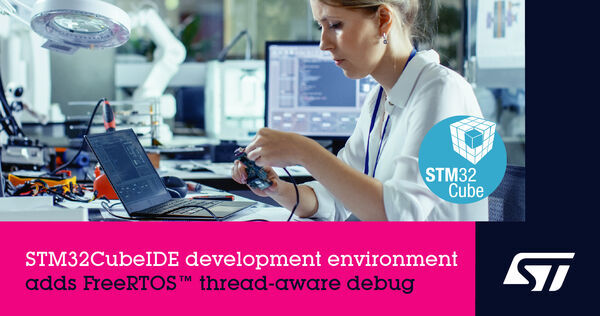
STMicroelectronics Adds FreeRTOS™ Thread-Aware Debug to STM32CubeIDE Development Environment
"STMicroelectronics has added support for FreeRTOS™ thread-aware debugging to its STM32CubeIDE development environment, giving users more power to complete their projects quickly and easily. Support for efficient RTOS development helps handle the growing complexity of today’s embedded systems that combine sophisticated features such as cybersecurity, wireless connectivity, user-interface graphics, and multiple operating modes. With the latest updates, ST has completed transferring major advanced features of Atollic TrueStudio® for STM32 into STM32CubeIDE after acquiring Atollic in 2017. STM32CubeIDE further extends the tool’s features and provides direct access to STM32CubeMX configuration functionalities to simplify project setup. Users can select their target microcontroller from the complete STM32 portfolio, configure GPIOs, clock tree, peripherals, and pin assignments, quickly analyze power consumption, select middleware stacks, and generate initialization code for the desired configuration. In addition to easing configuration, the STM32CubeIDE C/C++ development platform accelerates code generation, code compilation, and debugging for all types of systems from simple bare metal to multi-threaded OS." [...]

Renesas RA Family Adds Ultra-Low Power RA2L1 MCU Group with Advanced Capacitive Touch Sensing for Cost-Effective, Energy-Efficient IoT Node HMI Applications
"32-bit Arm Cortex-M23-based MCUs Offer Best-in-Class Power Consumption with Flexible Power Modes for Lower Average Power in Multiple Applications Renesas Electronics Corporation (TSE:6723), a premier supplier of advanced semiconductor solutions, today announced the expansion of its 32-bit RA2 Series microcontrollers (MCUs) with 20 new RA2L1 Group MCUs, increasing the RA Family to 66 MCUs. The general-purpose RA2L1 MCUs use the Arm® Cortex®-M23 core operating up to 48 MHz. The RA2L1 MCUs are supported by the easy-to-use Flexible Software Package (FSP) and Renesas’ partner ecosystem, which offers software and hardware building block solutions that work out-of-the-box. The ultra-low power and innovative touch interface of the RA2L1 MCUs make them ideal for home appliance, industrial and building automation, medical and healthcare, and consumer human-machine-interface (HMI) IoT applications. The RA2L1 MCUs are designed for ultra-low power consumption, with several integrated features to lower BOM costs, including capacitive touch sensing, embedded flash memory densities up to 256 KB, SRAM at 32 KB, analog, communications, and timing peripherals, and safety and security functions. In many battery-powered applications, the MCU spends most of the time in a low-power standby mode waiting for an internal or external event to wake-up the CPU and process data, make decisions and communicate with other system components." [...]

New product: Raspberry Pi 4 Case Fan
"Today we’re launching a stocking-filler product to help you squeeze more performance out of your Raspberry Pi 4. The $5 Raspberry Pi 4 Case Fan clips inside the lid of the Official Case, and keeps your Raspberry Pi 4 cool even when running the heaviest workloads, at the most aggressive overclocks. Raspberry Pi 4 power optimisation Like all electronic products, Raspberry Pi generates waste heat as it works. Along with most fanless products – like most mobile phones – Raspberry Pi 4 was originally designed to operate in a “sprint-and-recover” mode: if run at maximum performance for an extended period it would heat up, and eventually throttle back to limit its temperature. In practice, the power optimisation work that we’ve done over the last eighteen months has largely eliminated throttling for an uncased board, operating at the stock clock frequency of 1.5GHz, and in a typical ambient temperature. Here’s a graph of temperature during a quad-core compile of the Linux kernel: you can see the temperature barely exceeds 70C." [...]

10 most popular modules and sensors for the Arduino UNO all on one board
"Getting started with electronics and sensing the world around you is now easier than ever with the new all-in-one Arduino Sensor Kit from Arduino, in partnership with Seeed. The 10 most popular modules and sensors for your Arduino UNO have been integrated onto a single board, providing plug-and-play convenience without the need for any soldering or wiring! Combining basic Grove sensors and actuators for the Arduino UNO, the kit contains a base shield featuring the following modules that can be connected either through the digital, analog, or I2C connectors: - An OLED screen - 4 digital modules (LED, button, buzzer and potentiometer) - 5 sensors (light, sound, air pressure, temperature, and accelerometer) Just plug the Arduino Sensor Kit into the Arduino UNO, then you’re ready to follow the Plug, Sketch & Play online lessons that make getting started a breeze. The kit is equipped with 16 Grove connectors, which when placed on the board, offer functionality to the various pins. With seven digital connections, four analog connections, four I2C connections, and a UART connection, the base shield can be easily mounted onto an Arduino UNO board and programmed through the Arduino IDE. " [...]

Andes RISC-V Vector Processor NX27V is Upgraded to RVV 1.0
"Andes Technology Corporation, a leading supplier of high efficiency, low-power 32/64-bit RISC-V processor cores and Founding Premier member of RISC-V International, today announces the first commercial RISC-V vector processor IP, AndesCore™ NX27V, is upgraded to support the latest RISC-V Vector (RVV) extension spec (version 1.0), and several key features. RVV 1.0 includes new instructions such as vector floating-point reciprocal and reciprocal square-root estimate for math calculation. In addition to the existing register grouping, LMUL (vector length multiplier) adds fractional options to use less register bits to make it more flexible. The NX27V with powerful vector processing and parallel execution capability targets for the applications with large volumes of data such as AI, AR/VR, computer vision, cryptography, and multimedia. The NX27V was designed from ground up to be a Cray-like full vector compute engine. Its Vector Registers are as wide as 512 bits each and can be extended to 4,096 bits through LMUL setting." [...]
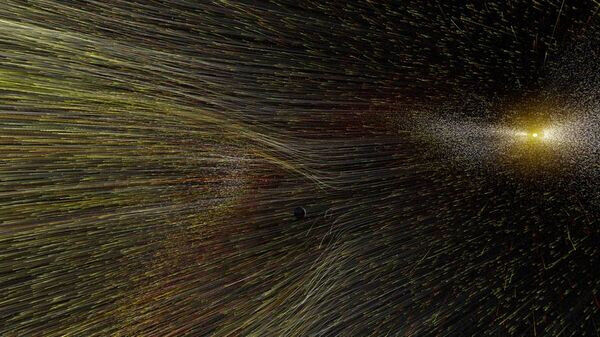
NASA Selects Heliophysics Missions of Opportunity for Space Science Research and Technology Demonstration
"NASA has selected two SmallSat missions – a study of Earth’s outer most atmosphere and a solar sail spaceflight test mission – to share a ride to space in 2025 with the agency’s Interstellar Mapping and Acceleration Probe (IMAP). The missions – the Global Lyman-alpha Imagers of the Dynamic Exosphere (GLIDE) and Solar Cruiser – were selected as Solar Terrestrial Probes (STP) Missions of Opportunity. GLIDE will help researchers understand the upper reaches of Earth’s atmosphere – the exosphere – where it touches space. Solar Cruiser demonstrate the use of solar photons for propulsion in space. The launch of the IMAP mission in 2025 to the first Lagrangian equilibrium point (L1), about 1 million miles towards the Sun, will be a pathfinder for NASA’s new RideShare policy. With the policy, the agency’s Science Mission Directorate (SMD) will plan – from the inception of major missions – to take advantage of excess launch capacity and provide increased access to space for SmallSats." [...]
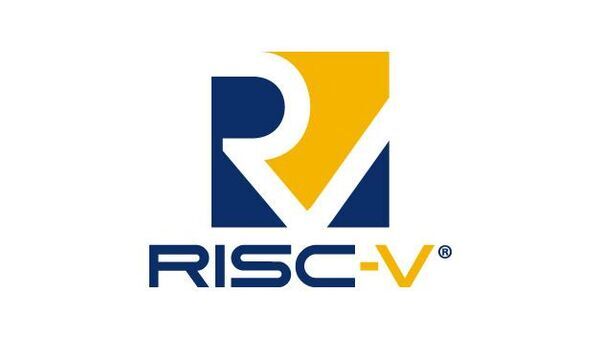
RISC-V, the Linux of the chip world, is starting to produce technological breakthroughs
"A decade ago, an idea was born in a laboratory at the University of California at Berkeley to create a lingua franca for computer chips, a set of instructions that would be used by all chipmakers and owned by none. It wasn't supposed to be an impressive new technology, it was merely supposed to get the industry on the same page, to simplify chip-making in order to move things forward. But a funny thing has happened on the way to a global chip standard: RISC-V, as the Berkeley effort is known, has begun to produce some technical breakthroughs in chip design. As just one example, a recent microprocessor design using RISC-V has a clock speed of 5 gigahertz, well above a recent, top-of-the-line Intel Xeon server chip, E7, running at 3.2 gigahertz. Yet the novel RISC-V chip burns just 1 watt of power at 1.1 volts, less than one percent of the power burned by the Intel Xeon. The speed and power efficiency of the RISC-V part also top the specs for Exynos 4, a top-of-the line part made by Samsung Electronics for its smartphones, based on the computing core provided by ARM Holdings Plc, Intel's chief rival." [...]
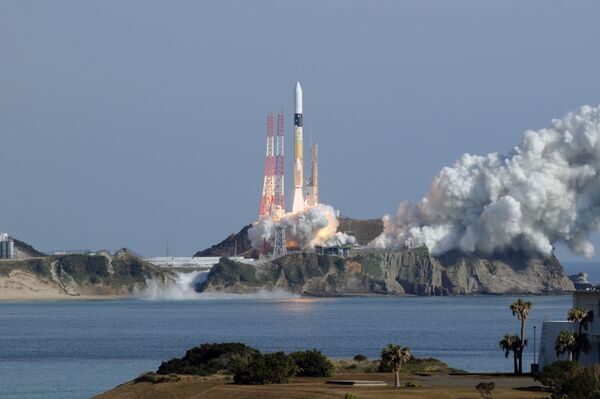
Japan launches joint military, scientific optical data relay satellite
"Mitsubishi Heavy Industries of Japan plans launched an H-IIA rocket on Sunday, 29 November to deploy a top secret communications satellite to support the country’s reconnaissance and scientific programs. Liftoff occurred at the start of a two-hour window that opened at 16:25 local time (07:25 UTC or 02:25 EST) from the Tanegashima Space Center. The payload The Optical Data Relay Satellite payload aboard this mission will be used to relay data collected by Japan’s fleet of Information Gathering Satellites (IGS) – including both optical and radar-imaging reconnaissance spacecraft – back to Earth for analysis. It is a joint mission with the Japan Aerospace Exploration Agency (JAXA), who will also use the spacecraft to collect data from scientific satellites in low Earth orbit. The new satellite replaces Kodama, or the Data Relay Test Satellite (DRTS), which was launched in 2002 and remained in service for 15 years before being decommissioned in August 2017. While Kodama was designed to provide high-speed communications through conventional S-band and Ka-band communications, its replacement also adds optical communications systems to further increase its throughput." [...]
Ciência e Tecnologia
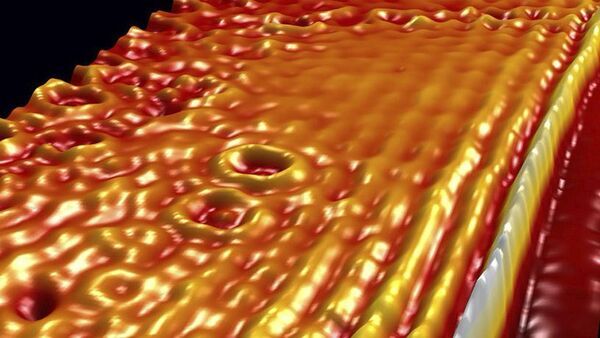
New Platform Generates Hybrid Light-Matter Excitations in Highly Charged Graphene
"Columbia researchers are the first to use static charge between 2D atomic layers to provide a new route for generating graphene plasmon polaritons without an external power source or chemical dopants; discovery has broad application in nanotechnology Graphene, an atomically thin carbon layer through which electrons can travel virtually unimpeded, has been extensively studied since its first successful isolation more than 15 years ago. Among its many unique properties is the ability to support highly confined electromagnetic waves coupled to oscillations of electronic charge—plasmon polaritons—that have potentially broad applications in nanotechnology, including biosensing, quantum information, and solar energy. However, in order to support plasmon polaritons, graphene must be charged by applying a voltage to a nearby metal gate, which greatly increases the size and complexity of nanoscale devices. Columbia University researchers report that they have achieved plasmonically active graphene with record-high charge density without an external gate. They accomplished this by exploiting novel interlayer charge transfer with a two-dimensional electron-acceptor known as a-RuCl3. The study is available now online as an open access article and will appear in the December 9th issue of Nano Letters." [...]
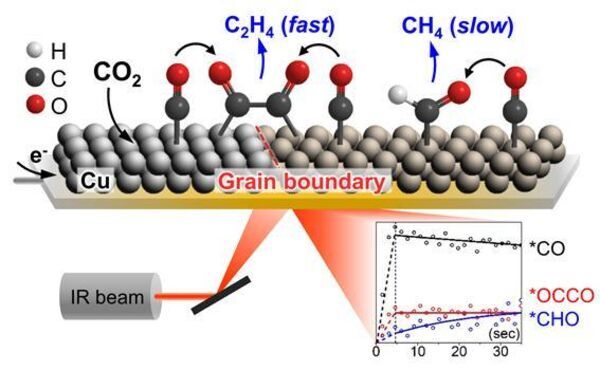
Carbon dioxide converted to ethylene -- the 'rice of the industry'
"Understanding intermediates of the electrochemical CO2 reduction to ethylene. Encouraging catalyst design-a key component of CO2 utilization using renewable energy. In recent times, "electrochemical conversion (e-chemical)" technology-which converts carbon dioxide to high-value-added compounds using renewable electricity-has gained research attention as a carbon capture utilization (CCU) technology. This green carbon resource technology employs electrochemical reactions using carbon dioxide and water as the only feedstock chemical to synthesize various compounds, instead of conventional fossil fuels. Electrochemical CO2 conversion can produce value-added important molecules in a petrochemical industry such as carbon monoxide and ethylene. Ethylene, referred to as the "rice of the industry", is widely used to produce various chemical products and polymers, but it is more challenging to produce from electrochemical CO2 reduction." [...]

Scientists peer into the 3D structure of the Milky Way
"Scientists from Cardiff University have helped produce a brand-new, three-dimensional survey of our galaxy, allowing them to peer into the inner structure and observe its star-forming processes in unprecedented detail. The large-scale survey, called SEDIGISM (Structure, Excitation and Dynamics of the Inner Galactic Interstellar Medium), has revealed a wide range of structures within the Milky Way, from individual star-forming clumps to giant molecular clouds and complexes, that will allow astronomers to start pushing the boundaries of what we know about the structure of our galaxy. SEDIGISM has been unveiled today through the publication of three separate papers in the Monthly Notices of the Royal Astronomical Society, authored by an international team of over 50 astronomers. “With the publication of this unprecedentedly detailed map of cold clouds in our Milky Way, a huge observational effort comes to fruition”, says Frederic Schuller from the Max Planck Institute for Radio Astronomy (MPIfR), lead author of one of the three publications, presenting the data release. Dr Ana Duarte Cabral, a Royal Society University Research Fellow from Cardiff University’s School of Physics and Astronomy, was lead author on one of the papers and has provided a catalogue of over 10,000 clouds of molecular gas in our Milky Way. The Milky Way, named after its hazy appearance from Earth, is a spiral galaxy with an estimated diameter between 170,000 and 200,000 light-years which contains between 100–400 billion stars." [...]

Physicists capture the sound of a “perfect” fluid
"The results should help scientists study the viscosity in neutron stars, the plasma of the early universe, and other strongly interacting fluids. For some, the sound of a “perfect flow” might be the gentle lapping of a forest brook or perhaps the tinkling of water poured from a pitcher. For physicists, a perfect flow is more specific, referring to a fluid that flows with the smallest amount of friction, or viscosity, allowed by the laws of quantum mechanics. Such perfectly fluid behavior is rare in nature, but it is thought to occur in the cores of neutron stars and in the soupy plasma of the early universe. Now MIT physicists have created a perfect fluid in the laboratory, and found that it sounds something like this: This recording is a product of a glissando of sound waves that the team sent through a carefully controlled gas of elementary particles known as fermions. The pitches that can be heard are the particular frequencies at which the gas resonates like a plucked string." [...]
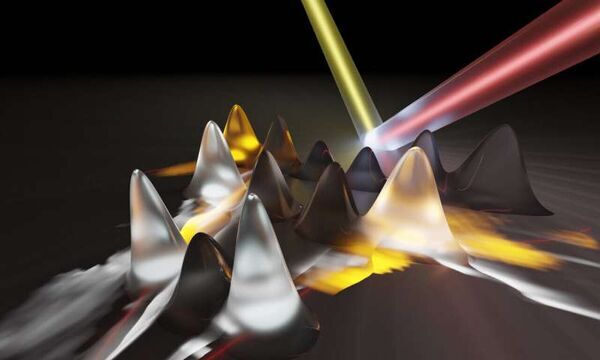
Mapping quantum structures with light to unlock their capabilities
"A new tool that uses light to map out the electronic structures of crystals could reveal the capabilities of emerging quantum materials and pave the way for advanced energy technologies and quantum computers, according to researchers at the University of Michigan, University of Regensburg and University of Marburg. A paper on the work is published in Science. Applications include LED lights, solar cells and artificial photosynthesis. Quantum materials could have an impact way beyond quantum computing. If you optimize quantum properties right, you can get 100% efficiency for light absorption. Mackillo Kira “Quantum materials could have an impact way beyond quantum computing,” said Mackillo Kira, professor of electrical engineering and computer science at the University of Michigan, who led the theory side of the new study." [...]
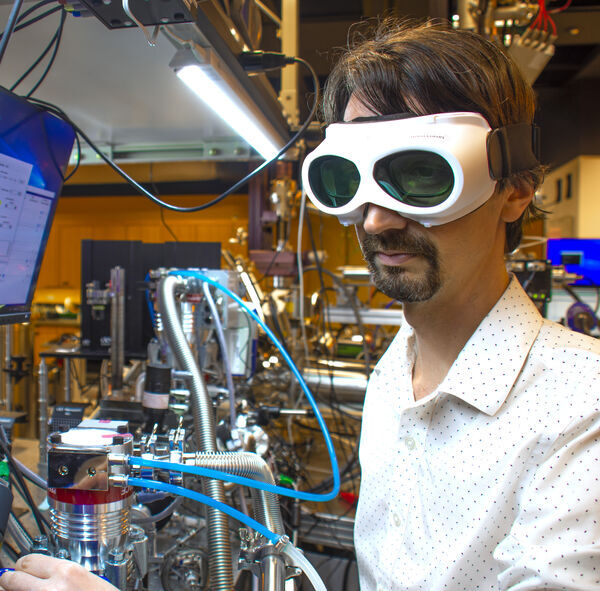
Dark excitons hit the spotlight
"Heralding the end of a decade-long quest, in a promising new class of extremely thin, two-dimensional semiconductors, scientists have for the first time directly visualized and measured elusive particles called dark excitons that cannot be seen by light. The powerful technique, described in leading journal Science, could revolutionize research into two-dimensional semiconductors and excitons, with profound implications for future technological devices, from solar cells and LEDs to smartphones and lasers. Excitons are excited states of matter found within semiconductors – a key ingredient in many current technologies. They form when electrons in the semiconductor material are excited by light to a higher energy state, leaving behind a “hole” at the energy level where the electron previously resided. “Holes are the absence of an electron, and so carry the opposite charge to an electron,” explained senior author Professor Keshav Dani, who leads the Femtosecond Spectroscopy Unit at the Okinawa Institute of Science and Technology Graduate University (OIST). “These opposite charges attract, and electrons and holes bind together to form excitons that can then move throughout the material.” In regular semiconductors, excitons are extinguished in less than a few billionths of a second after creation." [...]

Researchers confront optics and data-transfer challenges with 3D-printed lens
"Researchers have developed new 3D-printed microlenses with adjustable refractive indices – a property that gives them highly specialized light-focusing abilities. This advancement is poised to improve imaging, computing and communications by significantly increasing the data-routing capability of computer chips and other optical systems, the researchers said. The study was led by University of Illinois Urbana-Champaign researchers Paul Braun and Lynford Goddard and is the first to demonstrate the ability to adjust the direction in which light bends and travels through a lens with sub-micrometer precision. The results of the study are published in the journal Light: Science and Application. “Having the ability to fabricate optics with different shapes and optical parameters offers a solution to common problems faced in optics,” said Braun, who is a professor of materials science and engineering. “For example, in imaging applications, focusing on a specific object often results in blurry edges." [...]

Scientists Demonstrate New Opportunities for Controlling Light in Optical Graphene
"This will help scientists and engineers to better understand the properties of light propagating in materials with a hexagonal structure, and use this knowledge in fundamental research and the development of optical devices. Physicists from ITMO took part in this research. The article was published in Nature Photonics. In the last 15 years, scientists all over the world have been actively researching various properties of graphene, a two-dimensional material that’s composed of carbon atoms arranged in a hexagonal lattice. Simply put, carbon atoms in graphene compose hexagonal cells. Such a structure of a crystal lattice makes it so that electrons in this material can behave as particles with a zero effective mass despite having mass." [...]

Caltech-Led Lunar Trailblazer Mission Approved to Begin Final Design and Build
"After one year of preliminary design and several reviews, NASA has confirmed the Caltech-led Lunar Trailblazer mission to proceed to final design and build. Selected in June 2019 with planned flight system delivery in October 2022, the Lunar Trailblazer mission targets one of the most surprising discoveries of the decade: the presence of water on the Moon. The mission is a collaboration led by principal investigator Bethany Ehlmann, Caltech professor of planetary science, and managed by JPL, which Caltech manages for NASA. Other key partners include spacecraft provider Lockheed Martin and the University of Oxford, which provides one of Lunar Trailblazer's two instruments. "We're excited to pioneer NASA's use of small satellites to answer big planetary science questions," says Ehlmann. "We expect Trailblazer will hugely advance our understanding of something we don't fully understand: the water cycle on airless bodies." [...]

Supercharge your microscope: researchers share guide for ultra-precise 3D imaging
"UNSW Sydney researchers have shared step-by-step instructions to empower other scientists to enhance the resolution and stability of single-molecule microscopes. Researchers will be able to build ultra-precise microscopes to visualise and explore the interactions between individual molecules within cells, thanks to a system made available to the scientific community by UNSW medical researchers. Their system simply and practically overcomes the challenges associated with movement during imaging, exceeding current limits of super-resolution microscopes. When the sample or the microscope set-up moves during imaging, errors are introduced that degrade molecular resolution – this is called drift. “Drift is a major barrier to achieving resolution beyond the 20–30 nm set by Nobel-prize winning super-resolution fluorescence microscopy,” says Scientia Professor Katharina Gaus from UNSW Medicine’s Single Molecule Science. “The longer it takes to image a sample, the more drift there will be." [...]

Shrinking massive neural networks used to model language
"A new approach could lower computing costs and increase accessibility to state-of-the-art natural language processing. You don’t need a sledgehammer to crack a nut. Jonathan Frankle is researching artificial intelligence — not noshing pistachios — but the same philosophy applies to his “lottery ticket hypothesis.” It posits that, hidden within massive neural networks, leaner subnetworks can complete the same task more efficiently. The trick is finding those “lucky” subnetworks, dubbed winning lottery tickets. In a new paper, Frankle and colleagues discovered such subnetworks lurking within BERT, a state-of-the-art neural network approach to natural language processing (NLP). As a branch of artificial intelligence, NLP aims to decipher and analyze human language, with applications like predictive text generation or online chatbots." [...]

FSU chemistry professor uses old materials to make newer, better solar cells
"A Florida State University research team is mixing the old with the new to create a more stable solar cell. Professor of Chemistry Biwu Ma and his team published a new study that shows if you add a layer of ancient organic pigment to a perovskite solar cell, it increases the stability and efficiency of the cell. The study is published in the journal Angewandte Chemie . “Pigments are abundant, low cost and robust,” Ma said. “When we combine them with perovskites, we can generate new high-performance hybrid systems. It’s using the old with the new, and together they produce something really exciting.” Ma’s research in new generation solar cell technologies has been focusing on addressing the stability issues and challenges of perovskite solar cells." [...]
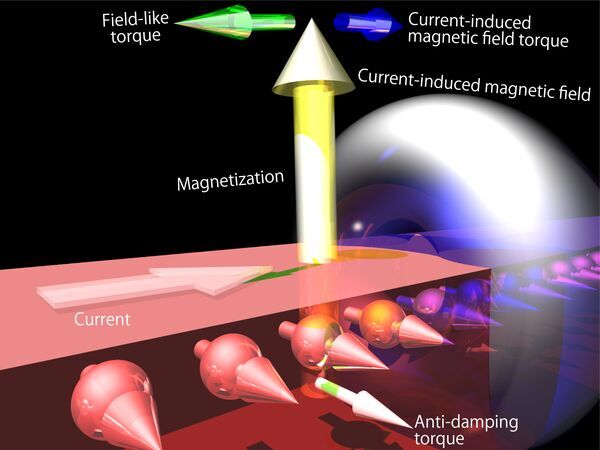
Lower current leads to highly efficient memory
"Memory based on the physics of spintronics could offer high speeds at low power Researchers are a step closer to realizing a new kind of memory that works according to the principles of spintronics which is analogous to, but different from, electronics. Their unique gallium arsenide-based ferromagnetic semiconductor can act as memory by quickly switching its magnetic state in the presence of an induced current at low power. Previously, such current-induced magnetization switching was unstable and drew a lot of power, but this new material both suppresses the instability and lowers the power consumption too. The field of quantum computing often gets covered in the technical press; however, another emerging field along similar lines tends to get overlooked, and that is spintronics. In a nutshell, spintronic devices could replace some electronic devices and offer greater performance at far low power levels. Electronic devices use the motion of electrons for power and communication." [...]

A shapeshifting material based on inorganic matter
"By embedding titanium-based sheets in water, a group led by scientists from the RIKEN Center for Emergent Matter Science has created a material using inorganic materials that can be converted from a hard gel to soft matter using temperature changes. Science fiction often features inorganic life forms, but in reality, organisms and devices that respond to stimuli such as temperature changes are nearly always based on organic materials, and hence, research in the area of “adaptive materials” has almost exclusively focused on organic substances. However, there are advantages to using inorganic materials such as metals, including potentially better mechanical properties. Considering this, the RIKEN-led group decided to attempt to recreate the behavior displayed by organic hydrogels, but using inorganic materials. The inspiration for the material comes from an aquatic creature called a sea cucumber. Sea cucumbers are fascinating animals, related to starfishes (but not to cucumbers!" [...]

Air filled fibre cables capable of outperforming standard optical fibres
"The next generation of optical fibre could be a step closer as a new study has shown that fibres with a hollowed out centre, developed at the University of Southampton, could reduce loss of power currently experienced in standard glass fibres. The COVID-19 crisis has seen people all over the world rapidly move their work and social lives online and communities have never relied on the internet more. The ever-increasing number of Zoom calls and webinars has highlighted the need to keep advancing the technology that has made this possible. For over 50 years, optical fibres made of silica glass have been the transmission medium of choice for high-speed optical communications — powering the global internet and cloud-based services used by households and businesses around the world. They are also used for sensing oil and gas installations, structural monitoring for railways and bridges, medical endoscopes and many more applications as part of a $40 billion global market. However, due to “scattering” of the light inside the glass, a fraction of the transmitted power is lost, a process known as attenuation, and this power loss becomes increasingly more of a problem as the wavelength of light is shortened." [...]
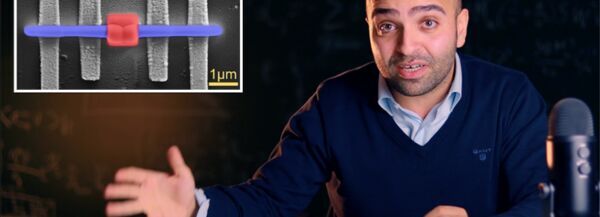
Leiden Physicists invent printable superconducting devices
"Superconducting devices such as SQUIDS (Superconducting Quantum Interferometry Device) can perform ultra-sensitive measurements of magnetic fields. Leiden physicsts invented a method to 3D-print these and other superconducting devices in minutes. 'Fabricating superconducting devices on a computer chip is a multi-step and demanding procedure, requiring dedicated facilities', says Kaveh Lahabi, a physicist at Leiden Universty. 'It usually takes days to complete', Lahabi and co-authors have developed a new approach, in which Josephson junctions, essential parts of SQUIDS, can be printed on almost any surface in mere minutes, within an electron microscope. " [...]

Graphene balloons to identify noble gases
"New research by scientists from Delft University of Technology and the University of Duisburg-Essen uses the motion of atomically thin graphene to identify noble gases. These gases are chemically passive and do not react with other materials, which makes it challenging to detect them. The findings are reported in the journal Nature Communications. Graphene is an ultimately thin material consisting of only one layer of carbon atoms. Its atomic thickness makes it a perfect filter material for gases and liquids: graphene by itself it is not permeable, but small perforations make it very permeable. Moreover, the material is among the strongest known and withstands high stresses." [...]
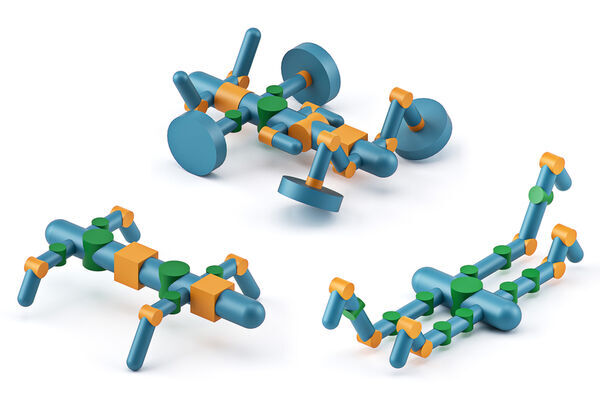
Computer-aided creativity in robot design
"MIT researchers’ new system optimizes the shape of robots for traversing various terrain types. So, you need a robot that climbs stairs. What shape should that robot be? Should it have two legs, like a person? Or six, like an ant? Choosing the right shape will be vital for your robot’s ability to traverse a particular terrain." [...]
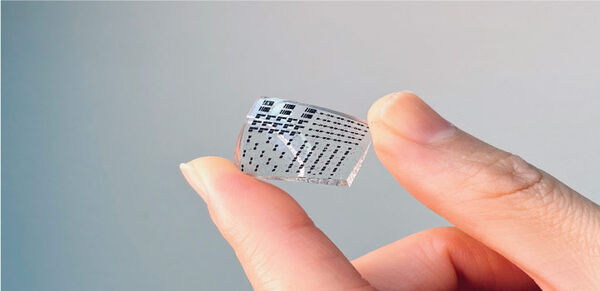
Electronic skin has a strong future stretching ahead
"Soft, stretchy, slimline and strong electronics could accelerate the arrival of artificial skin. A material that mimics human skin in strength, stretchability and sensitivity could be used to collect biological data in real time. Electronic skin, or e-skin, may play an important role in next-generation prosthetics, personalized medicine, soft robotics and artificial intelligence. "The ideal e-skin will mimic the many natural functions of human skin, such as sensing temperature and touch, accurately and in real time," says KAUST postdoc Yichen Cai. However, making suitably flexible electronics that can perform such delicate tasks while also enduring the bumps and scrapes of everyday life is challenging, and each material involved must be carefully engineered. Most e-skins are made by layering an active nanomaterial (the sensor) on a stretchy surface that attaches to human skin." [...]

Researchers measure electron emission to improve understanding of laser-based metal 3D printing
"Lawrence Livermore National Laboratory (LLNL) researchers have taken a promising step in improving the reliability of laser-based metal 3D printing techniques by measuring the emission of electrons from the surface of stainless steel during laser processing. Researchers collected thermionic emission signals from 316L stainless steel under laser powder bed fusion (LPBF) conditions using a custom, testbed system and a current preamplifier that measured the flow of electrons between the metal surface and the chamber. Then they used the generated thermionic emission to identify dynamics caused by laser-metal interactions. The journal Communications Materials published the work online on Nov. 27. The team said the results illustrate the potential for thermionic emission sensing to detect laser-driven phenomena that can cause defects in parts, optimize build parameters and improve knowledge of the LPBF process while complementing existing diagnostic capabilities. Researchers said the ability to capture thermal emission of electrons will help advance basic understanding of the laser-material interaction dynamics involved in the LPBF process and support the broader technology maturation community in building confidence in parts created using the technique." [...]

Voyager spacecraft detect new type of solar electron burst
"University of Iowa physicists report accelerated electrons linked with cosmic rays More than 40 years since they were launched, the Voyager spacecraft are still making discoveries. In a new study, a team of physicists led by the University of Iowa, report the first detection of bursts of cosmic ray electrons accelerated by shock waves originating from major eruptions on the sun. The detection, made by instruments onboard both the Voyager 1 and Voyager 2 spacecraft, occurred as the Voyagers continue their journey outward through interstellar space, making them the first craft to record this unique phenomena in the realm between stars. These newly detected electron bursts travel at nearly the speed of light, some 670 times faster than the shock waves that initially propelled them. The bursts were followed by plasma wave oscillations caused by lower-energy electrons arriving at the Voyagers’ instruments days later—and finally, in some cases, the shock wave itself as long as a month after that. The shock waves emanated from coronal mass ejections, which are expulsions of hot gas and energy that move outward from the sun at about 1 million mph." [...]
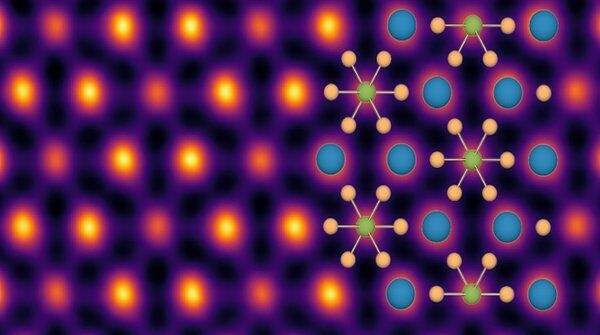
Titanium Atom That Exists in Two Places at Once in Crystal to Blame for Unusual Phenomenon
"Researchers discover why a perfect crystal is not good at conducting heat, although it seemingly should be The crystalline solid BaTiS3 (barium titanium sulfide) is terrible at conducting heat, and it turns out that a wayward titanium atom that exists in two places at the same time is to blame. The discovery, made by researchers from Caltech, USC, and the Department of Energy's Oak Ridge National Laboratory (ORNL), was published on November 27 in the journal Nature Communications. It provides a fundamental atomic-level insight into an unusual thermal property that has been observed in several materials. The work is of particular interest to researchers who are exploring the potential use of crystalline solids with poor thermal conductivity in thermoelectric applications, in which heat is directly converted into electric energy and vice versa. "We have found that quantum mechanical effects can play a huge role in setting the thermal transport properties of materials even under familiar conditions like room temperature," says Austin Minnich, professor of mechanical engineering and applied physics at Caltech and co-corresponding author of the Nature Communications paper. Crystals are usually good at conducting heat." [...]

Cooling electronics efficiently with graphene-enhanced heat pipes
"Researchers at Chalmers University of Technology, Sweden, have found that graphene-based heat pipes can help solve the problems of cooling electronics and power systems used in avionics, data centres, and other power electronics. "Heat pipes are one of the most efficient tools for this because of their high efficiency and unique ability to transfer heat over a large distance," says Johan Liu, Professor of Electronics Production, at the Department of Microtechnology and Nanoscience – MC2, at Chalmers. The results, which also involved researchers in China and Italy, were recently published in the scientific Open Access journal Nano Select. Electronics and data centres need to be efficiently cooled in order to work properly. Graphene enhanced heat pipes can solve these issues. Currently, heat pipes are usually made of copper, aluminium or their alloys." [...]

KIST develops transparent material for smartphone screens capable of repairing itself
"Self-healing polyimide repairs cracks in 20 minutes under UV rays In the “Terminator 2: Judgement Day,” the T-1000 can’t be stopped by bullets. The shapeshifting android has self-healing properties that repair damage in the blink of an eye. But this technology — once feasible solely in the realm of the cinema — is now becoming a reality. In the near future, it’s likely that smartphone users won’t have to fork over money to repair a cracked screen. Researchers have developed a material for smartphone liquid crystal displays that can repair itself in 12 hours at room temperature and in just 20 minutes under UV rays. The Korea Institute of Science and Technology (KIST) announced on Nov. 19 that it had developed a self-healing transparent electronic material capable of repairing cracks and other damage." [...]
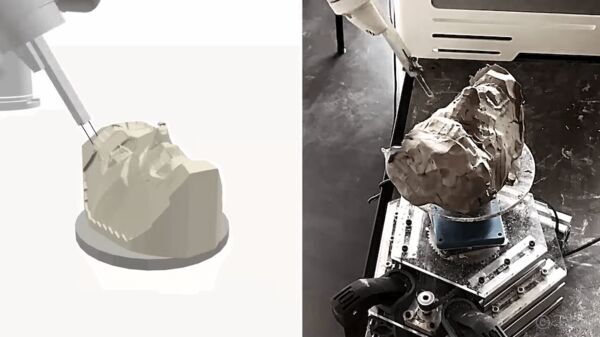
RobotSculptor: Artist-Directed Robotic Sculpting of Clay
"We present an interactive design system that allows users to create sculpting styles over and fabricate clay models using a standard 6-axis robot arm. Given a general mesh as input, the user iteratively selects sub-area of the mesh through decomposition and embeds the design expression into an initial set of toolpaths by modifying a set of key parameters that affects the visual appearance of the sculpted surface finish. These parameters are identified and extracted through a set of designed experiments using a customized loop tool interacted with the water-based clay material and are exposed to the user in an interactive user interface we developed. The initialized toolpaths are fed into the optimization component of our system afterwards for optimal path planning, aiming to find the robotic sculpting motions that match the target surface, maintain the design expression, and resolve collision and reachability issues. Using a customized loop tool, we demonstrate the versatility of our approach by designing and fabricating different sculpting styles over a wide range of clay models. " [...]

Lincoln Laboratory is designing a payload to integrate on Japanese satellites
"The US will provide sensors to be hosted on board regional navigation satellites that Japan is developing. According to Space-Track.org, approximately 21,000 objects of human origin are orbiting Earth, and about 1,500 of these objects are in or near geosynchronous orbit (GEO). Satellites in GEO support critical services, including commercial and military communications, weather forecasting, and missile launch warnings. The number of satellites and debris objects in the GEO belt is growing as launch rates increase and more countries gain access to space. These sensors will support the comprehensive space domain awareness (SDA) tracking efforts that provide for warning of impending collisions. Over the past 30 years, the United States has developed an extensive network of optical and radar sensors that provide observations to enable SDA." [...]
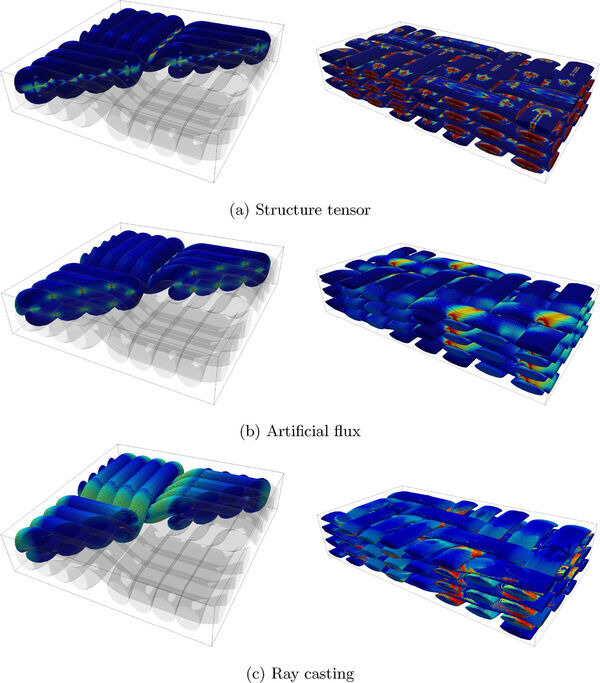
New Method Sees Fibers In 3D, Uses It To Estimate Conductivity
"As a vehicle travels through space at hypersonic speeds, the gases surrounding it generate heat at dangerous temperatures for the pilot and instrumentation inside. Designing a vehicle that can drive the heat away requires an understanding of the thermal properties of the materials used to construct it. A recent two-part study at the University of Illinois Urbana-Champaign developed a method to create 3D models of the fibers within composite materials then used that information to predict the thermal conductivity of the material. “We used X-ray microtomography to create 3D images that show the orientation of the fibers,” said Francesco Panerai, a faculty member in the Department of Aerospace Engineering at UIUC. “In most engineering applications we use composite materials made with carbon fibers, but the method we developed can be applied to any kind of fiber and any kind of composite.” Panerai said microtomography is similar to getting a CT scan in the hospital, but with high energy X-rays that can detect fine details in microfibers, which are a fraction of the diameter of a single human hair. “The images showing how the fibers are organized are much more than just pretty pictures—they are a description of the material in a three-dimensional grid." [...]

Accurate and Efficient 3D Motion Tracking Using Deep Learning
"A new sensing method has made tracking movement easier and more efficient. A research group from Tohoku University has captured dexterous 3D motion data from a flexible magnetic flux sensor array, using deep learning and a structure-aware temporal bilateral filter. "We can now track complex motions with higher accuracy," said Yoshifumi Kitamura, co-author of the study. Dexterous 3D motion data can be used for multiple purposes: biologists can use the data to record detailed movements of small animals in their living environments, scientists can track the flow of fluids, and researchers can track finger movements and objects being manipulated by users in virtual reality. Currently, optical cameras are the most prominent method of tracking movements. Yet optical cameras struggle with accuracy and reliability." [...]
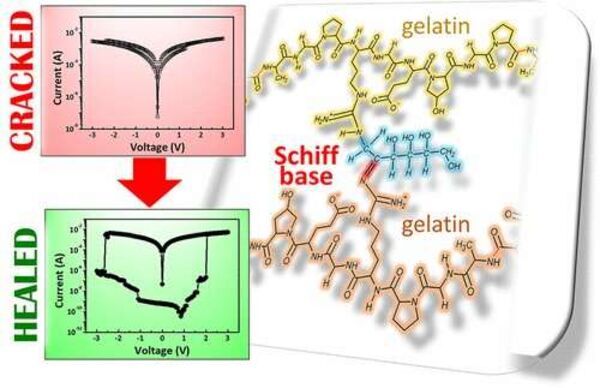
Self-repairing gelatin-based film could be a smart move for electronics
"Dropping a cell phone can sometimes cause superficial cracks to appear. But other times, the device can stop working altogether because fractures develop in the material that stores data. Now, researchers reporting in ACS Applied Polymer Materials have made an environmentally friendly, gelatin-based film that can repair itself multiple times and still maintain the electronic signals needed to access a device’s data. The material could be used someday in smart electronics and health-monitoring devices. Global consumer demand for hand-held smart devices is rapidly growing, but because of their fragility, the amount of electronic waste is also increasing. Self-repairing films have been developed, but most only work a single time, and some are made with potentially harmful agents that curtail their use in biomedical applications." [...]

A route for avoiding defects during additive manufacturing
"Additive manufacturing has yet to reach its potential in part because tiny bubbles or pores can form, creating weak spots in finished parts. Research published in Science reveals how the pores form and offers insight into controlling the machines to avoid this problem. Laser powder bed fusion is a dominant additive manufacturing technology that has yet to reach its potential. The problem facing industry is that tiny bubbles or pores sometimes form during the printing process, and these pores create weak spots in finished products. When a slow-speed, high-power laser is melting metal powder during the 3D printing of a part, a keyhole-shaped cavity in the melt pool can result. Pores, i.e." [...]
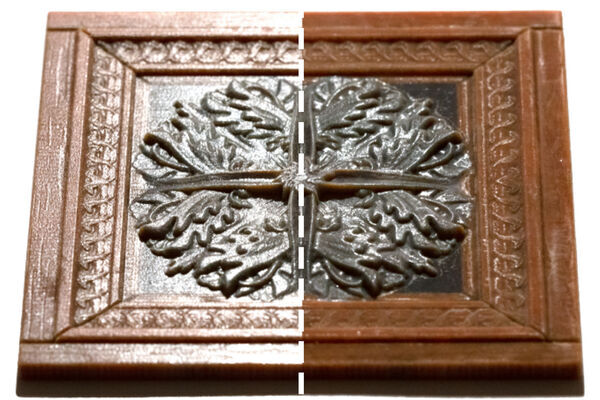
This 3D printer doesn’t gloss over the details
"New system enables realistic variations in glossiness across a 3D-printed surface. The advance could aid fine art reproduction and the design of prosthetics. Shape, color, and gloss. Those are an object’s three most salient visual features. Currently, 3D printers can reproduce shape and color reasonably well. Gloss, however, remains a challenge." [...]
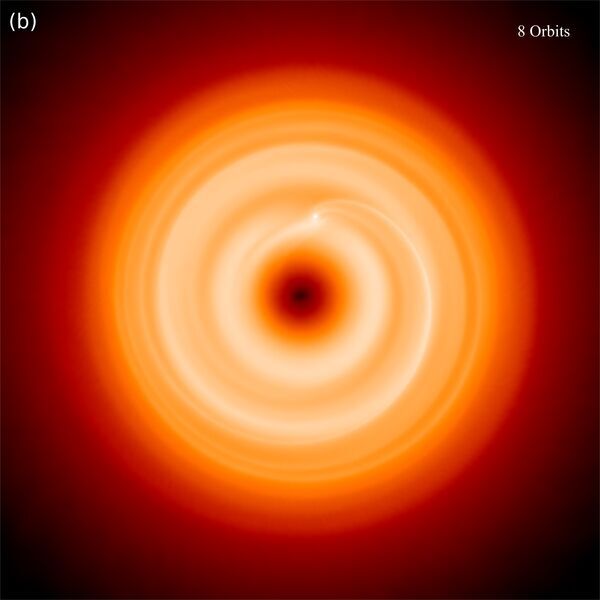
Rapid-forming giants could disrupt spiral protoplanetary discs
"Giant planets that developed early in a star system’s life could solve a mystery of why spiral structures are not observed in young protoplanetary discs, according to a new study by University of Warwick astronomers. The research, published today (26 November) in the Astrophysical Journal Letters andpart supported by the Royal Society, provides an explanation for the lack of spiral structure that astronomers expect to see in protoplanetary discs around young stars that also suggests that scientists may have to reassess how quickly planets form in a disc’s lifecycle. Protoplanetary discs are the birthplaces of planets, harbouring the material that will eventually coalesce into the array of planets that we see in the Universe. When these discs are young they form spiral structures, with all their dust and material dragged into dense arms by the massive gravitational effect of the disc spinning. A similar effect occurs at the galactic level, hence why we see spiral galaxies such as our own, the Milky Way. Over the course of three to ten million years material from the disc comes together to form planets, falls onto the star it is orbiting or just disperses into space through winds coming off the disc." [...]
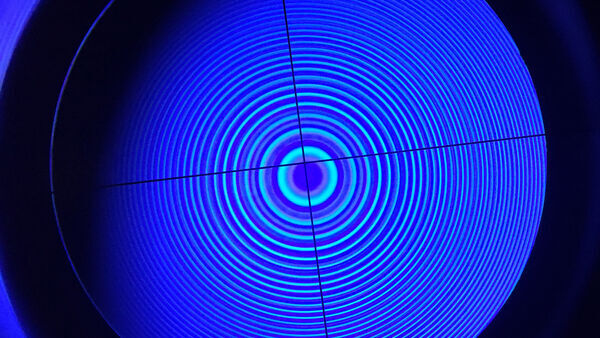
Physicists Nail Down the ‘Magic Number’ That Shapes the Universe
"A team in Paris has made the most precise measurement yet of the fine-structure constant, killing hopes for a new force of nature. As fundamental constants go, the speed of light, c, enjoys all the fame, yet c’s numerical value says nothing about nature; it differs depending on whether it’s measured in meters per second or miles per hour. The fine-structure constant, by contrast, has no dimensions or units. It’s a pure number that shapes the universe to an astonishing degree — “a magic number that comes to us with no understanding,” as Richard Feynman described it. Paul Dirac considered the origin of the number “the most fundamental unsolved problem of physics.” Numerically, the fine-structure constant, denoted by the Greek letter α (alpha), comes very close to the ratio 1/137. It commonly appears in formulas governing light and matter." [...]
Modelos 3D
Com a disponibilidade de ferramentas que permitem dar azo a nossa imaginação na criação de peças 3D e espaços como o thingiverse para as publicar, esta rubrica apresenta alguns modelos selecionados que poderão ser úteis.

Fully Customizable General Purpose Handles - Dual Point Customizer
"The Thingiverse Customizer App will only work with one .scad file from any given Thing, but Fully Customizable General Purpose Handles currently contains two .scad files. The purpose of this remix, is just to allow you to customize the Dual Point variant in the Thingiverse Customizer App. Please see the main Thing: Fully Customizable General Purpose Handles for full details, including many STL exports and to customize the Single Point variant. " [...]
Documentação
A documentação é parte essencial do processo de aprendizagem e a Internet além de artigos interessantes de explorar também tem alguma documentação em formato PDF interessante de ler. Todos os links aqui apresentados são para conteúdo disponibilizado livremente pelo editor do livro.
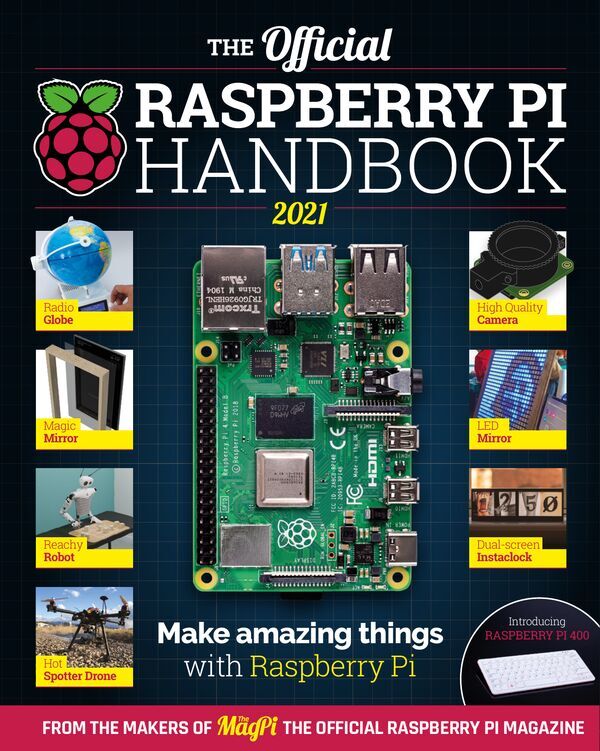
The Official Raspberry Pi Handbook 2021
"To help you get the most of out of your Raspberry Pi computer, this official Handbook features 200 pages of essential information, inspiring projects, practical tutorials, and definitive reviews. Learn how to set up your Raspberry Pi and start using it Discover the new Raspberry Pi 400 and High Quality Camera Be inspired by incredible projects made by other people Learn how to code and make with our step-by-step tutorials Find out about the top kits and accessories for your projects" [...]
Projetos Maker
Diversos Projetos interessantes.

Animated RGB Mask
"Today Mask has become an essential part to protect ourselves and also has become a lifestyle statement. As a tech-savvy enthusiast, I have made a mask that protects and makes you look good. The mask is made with the help of : 1) WS2812b led strip 2) Arduino Nano And a bit of programming. In this mask, you can display your own text, message, emoji, or anything of your choice. It is 100% safe as it is powered by a mobile power bank of 20,000 mah. The LED Matrix is removable to help us ensure the hygiene of the cloth part of the mask by washing or sanitizing it." [...]
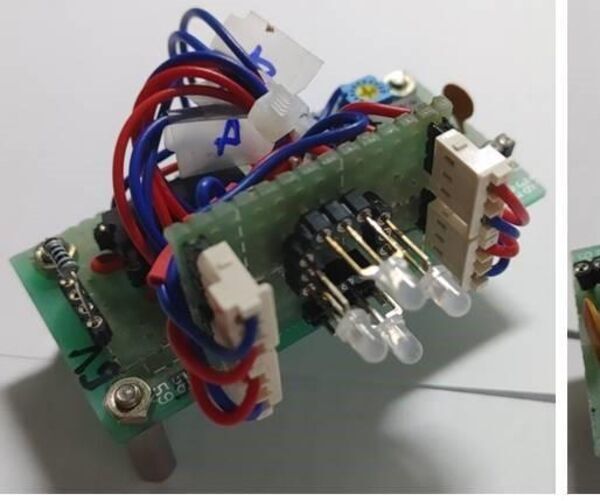
CD4017 Based Multi-functional Bicycle Backlight
"This circuit is made by applying very common CD4017 LED circuit so called as LED chaser. But it can support diverse LED blinking methods by plugging control cables as different manners. Maybe it can be utilized as bicycle backlight or visual indicator of Raspberry Pi or Arduino circuits. This circuit is operating itself with own NE555 clock source without any control of external controller such as Raspberry Pi or Arduino. It’s a very typical and common LED chaser circuit (Turning on LED on by one as sequential manner) using CD4017 (Decade Counter IC). Therefore, detail explanations will not necessary for the circuit operation." [...]
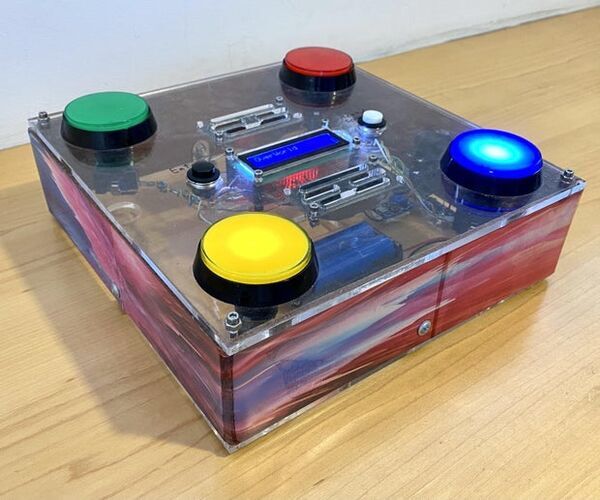
Arduino Music and Game Box
"This project was a special gift to my son Eyal, for the birth of his younger brother Itamar. It basically lets you play four games: Simon game Reaction time game Free play (baby-mode) Music mode - plays the Super Mario brothers, by Reyboz (Thanks! )The hardware was heavily influenced by the AWESOME LenkaDesign instructable The code except tone_functions.h was written by myself and the Game Box was assembled and wired with the wonderful help of Shani Spivak, thanks! Supplies: Rotary tool kit Hot glue and glue gun Solder wire and solder iron Material\ Screws: 4 "L" Brackets (15 mm) 8 screws and nuts M4 x 10 (for brackets) 4 long standoffs M3 x 30 4 long screws M3 x 50 18 short M3 x 12mm screws and washers (example) 4 short standoffs M3 x 12 mm 2m Ethernet cable to be stripped for wires 0.5m Mini-USB cable to be cut. 1 x variable resistor (50 - 1M Ohm) 1 x 1k Ohm, 4 x 10k, 4 x 100 Ohm resistors 2 18650 cells from old laptop 2-pin battery terminals $2.91/10 pcs Breadboard for nano (cut to 83 x 37 mm) 1602 LCD + I2C module - $1.78 Red, Blue, Green, Yellow huge momentary buttons - $1.56 each White and black regular sized momentary buttons - $0.42 each Large rocker switch - $0.55 Micro usb breakout - $0.22 TP4056 Battery charging controller - $0.35 Dual battery case - $1.18 5V Voltage booster - $0.39 Two 7030 TV speakers - 5W 4 - $1.97 each Arduino nano compatible - $3.73 Printable Vinyl sheets for decoration (Optional) Total about $19.8 if I got it right. You're all set!" [...]
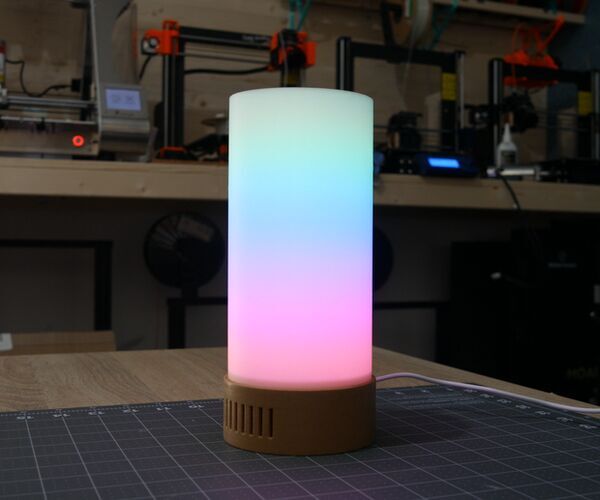
3D Printed LED Mood Lamp
"I've always had this fascination with lamps, so having the ability to combine 3D Printing and Arduino with LEDs was something I needed to pursue. The concept is very simple and the outcome is one of the most satisfying visual experiences you can put in a lamp format. Please bear in mind that this was my first ever Arduino project, so not everything might be as perfect or as efficient as it could be, but it works. I'll get better with more practice :) If you want the visual version of these instructions, please see the youtube video, and while you're there, make sure to subscribe to see my other projects :) Enjoy! " [...]
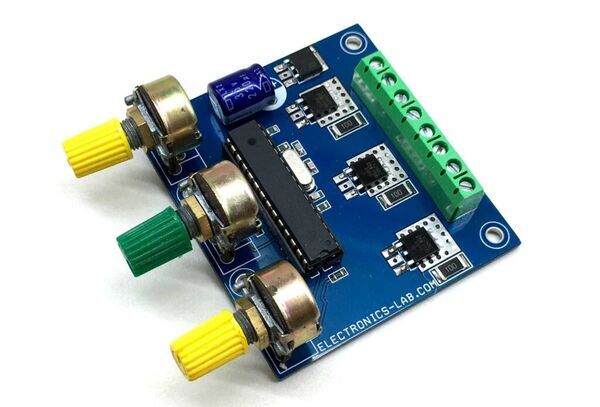
RGB LED Controller using Atmega328
"This is a 3-channel, PWM based current-adjustable LED driver designed for RGB LED control. The circuit has been designed to control high current RGB LEDs or RGB LEDs strip. Colors of the three RGB LEDs can be set using 3 potentiometers, different colors are possible by adjusting these potentiometers. We have used ATmega328 microcontroller to generate 3 PWM signals by reading analog inputs. These analog inputs are connected to 3 potentiometers. PWM outputs interfaced with gates of 3 x IRLR7843 MOSFETs which drive the high current loads." [...]

Reverse engineering RAM storage in early Texas Instruments calculator chips
"Texas Instruments introduced the first commercial single-chip computer in 1974, combining the CPU, RAM, ROM, and I/O into one chip. This family of 4-bit processors was called the TMS1000.1 A 4-bit processor now seems very limited, but it was a good match for calculators, where each decimal digit fit into four bits. This microcontroller was also used in hand-held games2 and simple control applications such as microwave ovens.3 Since its software was in ROM, the TMS1000 needed to be custom-manufactured for each application, but it was inexpensive and sold for $2-$4 in quantity. It became very popular and was said to be the best-selling "computer on a chip". The die photo above shows the main functional blocks of the TMS1000. One thing that distinguishes the TMS1000 (and most microcontrollers) from regular processors is the "Harvard architecture", where code and data are stored and accessed separately." [...]
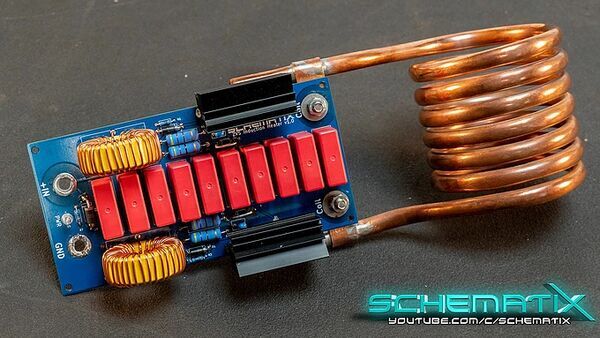
1.4kW Induction Heater
"This induction heater is based on the popular "Royer induction heater" schematic. Changes made to the design include: Higher rated MOSFETs Bigger Zener diodes RC filter on the Gates Flyback Diode (D8) Gate resistors to limit ringing (R8, R9) In short, all of the changes help to improve the durability of the induction heater. It has been reported with the original design, often the MOSFET gate's would be damaged from flyback after extended use. To be fair, I haven't tested the circuit without my additions so I can't confirm or deny this. Gate resistors have to be added as ringing was quite a problem without them. The ringing would cause the MOSFETs to become quite hot & this can lead to premature failure." [...]
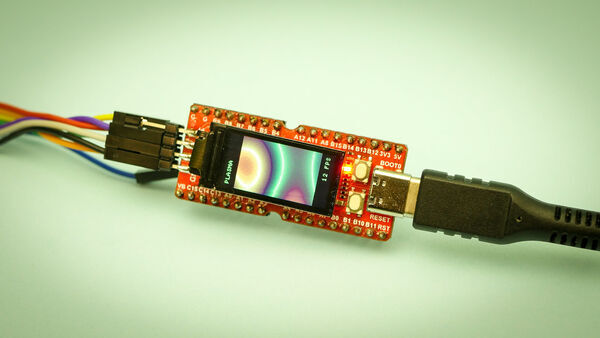
Programming the GD32V Longan Nano
"RISC-V is gaining traction and some development boards have already popped up. One of them is the widely available Sipeed Longan Nano. Written information is a bit sparse at the moment. Let’s try to fix this with a quick writeup on wiring and programming the board. If you just want to see what the board can do here is a video instead. Nuclei SDK For programming a GD32V series SoC best choice at the moment is the Nuclei SDK." [...]

Keypad Garage Opener
"Replaced a bad keypad on the outside of my garage door. Keypad to open garage door. Password can be changed through the keypad and is saved to EEPROM. Changing the password requires knowing the saved password. See code for instructions on setting password. Green LED to show correct password, red LED to show incorrect password." [...]
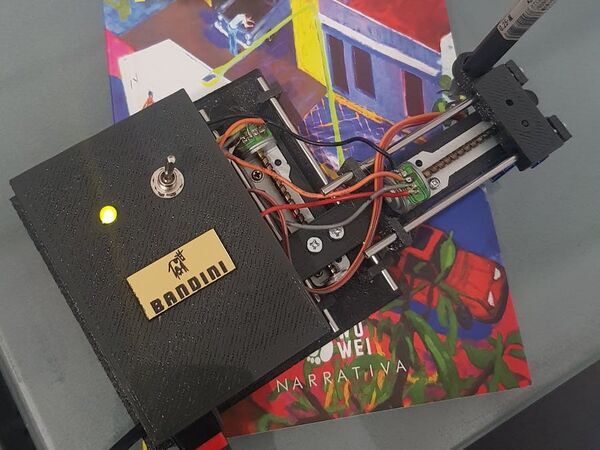
Book Signer
"Are you a writer facing a book signing? Don't worry, this machine will do it for you. As a fiction writer you have already spent too much time with your novel to think now lots of personal dedications for the book signing event. Just relax, Book Signer will do the heavy part for you. Hardware To move X and Y axis DVD Rom step motors are used. You can find lots of online tutorials about how to extract step by step motors from old DVD and CD roms." [...]

SpaceX Next Launch Display with Adafruit MagTag
"The Adafruit MagTag is perfect for reminders of upcoming events. This includes space launches. and in this project, launches by SpaceX. SpaceX is launching numerous interesting missions including manned to the ISS, cargo for the ISS, Starlink satellites, and more. The MagTag fetches launch JSON data via WiFi and displays it on the beautiful eInk display. The mission, when the launch is occurring and a description of the mission (if available) and formatted onto the display." [...]

e-Paper Templates
"Template-oriented driver for e-paper displays using Arduino. Define a layout with a JSON template, and update the display by changing variables via a REST API or MQTT. " [...]
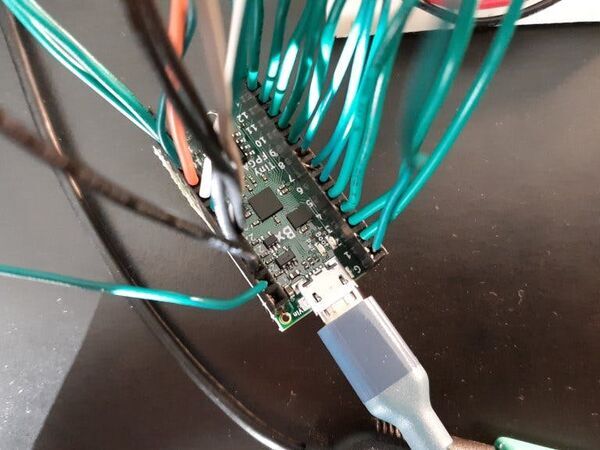
RapidROM
"This FPGA ROM emulator dramatically speeds software development time on computers with ROM-based storage. RapidROM This FPGA ROM emulator dramatically speeds software development time on computers with ROM-based storage. It will simulate any 28c256-compatible ROM chips. Typically, the process to load new code involves powering down the computer, physically removing the ROM, placing the ROM in a programmer, flashing the code, then returning the ROM to the computer and powering it back up. This process is very time consuming and cumbersome when testing frequent, minor changes to the code, or when debugging a problem. This FPGA-based emulator can remain attached to the computer and be reprogrammed in a few seconds without even powering the computer down." [...]
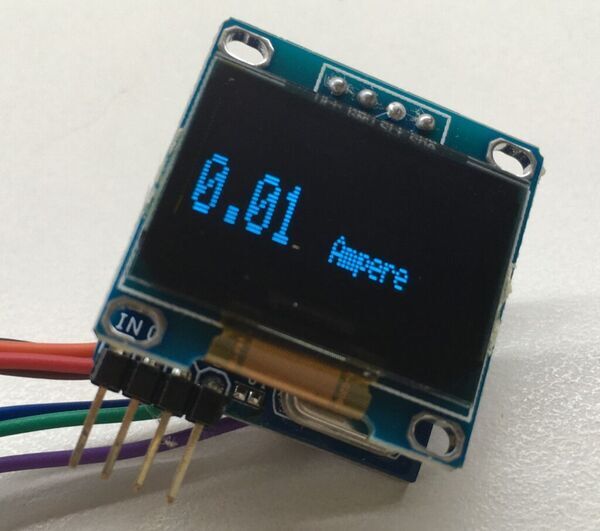
Current Meter Using 0.96″ OLED Display
"This project provides an economical and precise solution for DC current sensing and display on an OLED display. This board uses the ACS715T-20A hall effect-based linear current sensor chip, 0.96 Inch I2C OLED Display and Atmega328 microcontroller chip. It is an Arduino compatible open-source hardware that can be modified to your requirements. It is easily programable using the Arduino IDE. Connector CN2 is provided for Boot-Loader burning and programming of the Atmega328 chip using Arduino IDE. Refer to the wiring diagram below for programming and connections." [...]
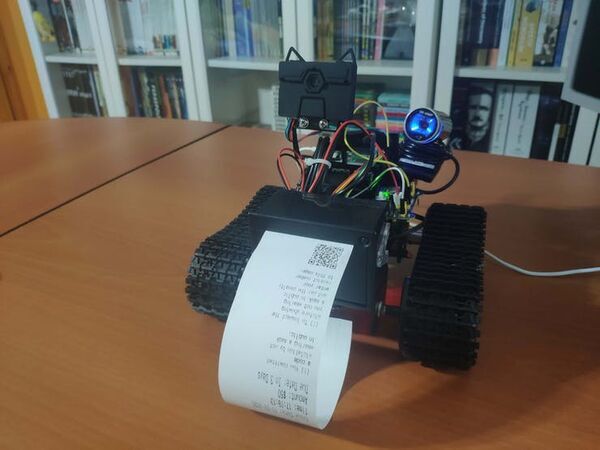
Web-Enabled ML Mask Detection Robot Fines w/ Penalty Receipt
"A prototype to minimize the number of staffs having to interact w/ people to notify them wearing masks live streaming while operating. Story During these unprecedented times - COVID-19 pandemic - one of the most crucial precautions to falter the detrimental effects of coronavirus is to avert the spread of the virus worldwide as much as possible. Especially as we know that it is spreading even faster than seasonal influenza viruses: "With the worldwide spread of the novel Coronavirus Disease 2019 (COVID-19), caused by the SARS-CoV-2 virus, we are experiencing a declared pandemic. One of the largest preoccupations about this new virus is its notable ability to spread given the absence of any effective treatment, vaccine, and immunity in human populations. Epidemiologists quantify the ability of infectious agents to spread by estimating the basic reproduction number (R0) statistic (Delamater et al., 2019), which measures the average number of people each contagious person infects. The new coronavirus is transmitting at an average R0 between 2.7 and 3.2 (Billah, Miah & Khan, 2020; Liu et al., 2020), which is greater than seasonal influenza viruses that spread every year around the planet (median R0 of 1.28, Biggerstaff et al., 2014)." [...]

3D Printed Spirometer
"Spirometers are the classical instrument to perform the parsing of air as it is blown out of your mouth. They consist of a tube that you blow into that records the volume and speed of one breath which are then compared to a set of normal values based on height, wt and sex and are used to follow lung function. The instrument I designed, although tested for accuracy with a flowmeter is not in any way a certified medical device, but in a pinch it certainly could pass for one--giving relative reproducible and accurate accounts of the standard FEV1, FEVC and graphs of volume output and speed over time. I designed it so that the electronics with the expensive tethered sensor were confined to one piece and the easily disposable blow tube with associated virus laden channels was in another. This appears to be one of the drawbacks of standard machines used clinically -- replaceable cardboard mouthpieces don't really eliminate all risks when viruses are airborne and you're asked to blow long and hard into a very expensive apparatus. The cost of the device is under $40 and anyone with a 3D printer can turn out as many as they want." [...]

Heart Beat sensing and displaying device
"In now days pandemic it will be helpful if you can check your heart rate, so I have created this. I have shown you how the project works once it has been coded I hope you will like the project, and basically we have used a heart rate sensor we take readings for some seconds and then it displays it on the lcd screen, its cool right to have your own heart rate detection device I have given the scheamatics for connections and my code as well. In the scheamatics there are three pins for KY039 heart rate sensor ,connect the S pin to Analog pin 0; 5v pin to 5v pin on arduino; Gnd pin to Gnd pin on arduino ; I hope you will be knowing how to connect the lcd screen to arduino as it is very easy thing. " [...]
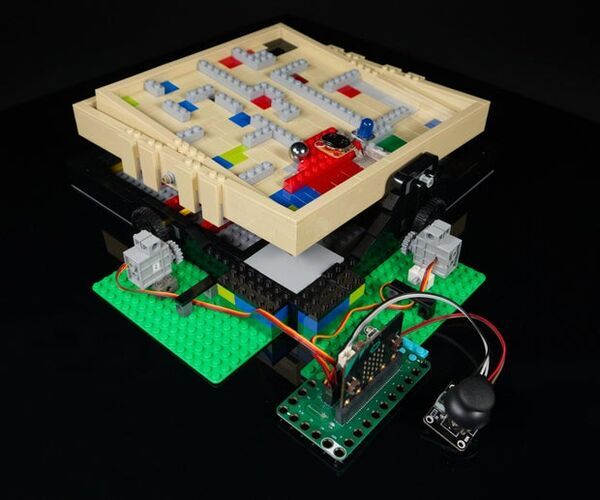
Tilting LEGO Maze With Micro:bit
"It's no secret the LEGO is awesome, and there's nothing we love more than adding some fun electronics to our LEGO kits to make them even more awesome. Our LEGO maze has knobs on two of the sides to allow you to tilt the top half and maneuver a ball through the maze from start to finish. You can design your own mazes (it's LEGO!) so you can make them as easy or difficult as you wish. Let's add some electronics! We'll be using a micro:bit along with a (LEGO compatible) Bit Board." [...]

Attiny85 8-pin Arduino Programming Shield
"This Arduino shield transforms your Arduino UNO into an ISP-Programmer for the ATtiny85 microcontroller. The board simplifies the Boot-loader burning on the ATtiny85 chip. It consists of an 8-pin DIP socket to insert the new ATtiny85 chip, C1 decoupling capacitor, and C2 capacitor is provided to avoid the Arduino UNO from being auto-reset when we upload the program to the ATtiny85 chip. The project is a good choice when the user wants to shrink the Arduino project into an 8-pin microcontroller and when the project requires only a few I/O pins. " [...]

Make a Smart Zigbee Connected Home Sensor Hub
"Make a wooden smart clock with Zigbee feature to monitor the environment of your home. Initially, I wanted to monitor the environment in another room by means of a Zigbee device collecting temperature and humidity data from a Thunderboard. I needed a screen to display the sensor data, but I didn’t want to use a developer board, so I decided to design a beautiful enclosure and create an exquisite product. After considering a variety of enclosures, I decided to design a fine, clock-like wooden device for a nightstand or desk that would function as a smart alarm clock and display sensor data. The design would look like the figure below. The device would show the time of day but also be able to display temperature or humidity as needed." [...]
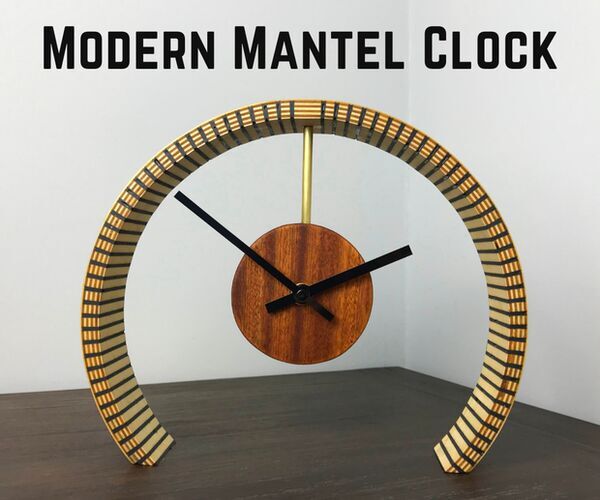
How to Make a Bent Plywood Modern Mantel Clock
"Ive always liked unique clocks, so I decided to try and make one myself and here is what I came up withI call it the Bent Plywood Modern Mantel Clock. To bend the wood, I used a technique called kerf cuts in which you cut almost all the way through the wood but leave just enough to still hold everything together. This was my first time doing this technique and I learned a lot along the way, and I hope you do too Supplies: - ½ inch plywood - ½ inch MDF board - Circle Cutting Jig - Router - Jig Saw - Palm Sander - Simple Finish - 5 Minute Epoxy - Strap Tie Down - Clock Mechanism" [...]
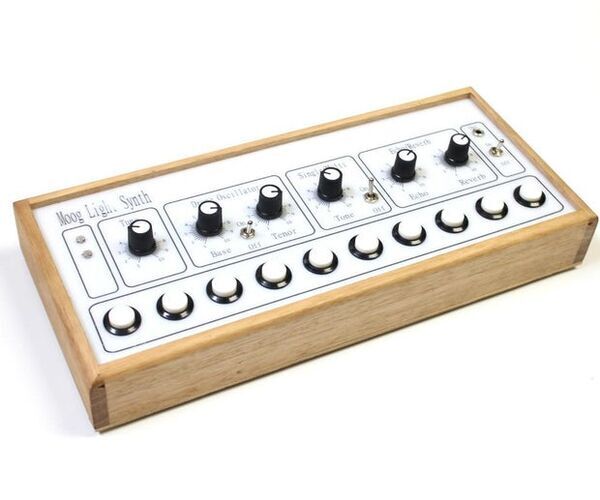
Moog Light Synth V2
"This synth is a pulse width modulated oscillator, routed through a light-controlled resonant low pass filter. The "growling" oscillator tonality is supplied via a PWM and an awesome high-resonance low pass filter. The oscillator is controlled via 2 Light dependent resistors (LDR) and gives you the ability to create amazing musical expression. The 10 “keys” give you different tones and allow you to play it like a keyboard Also included is 2 Hex inverter drones, supplied via a 40106 IC. The 2 two adjustable drone oscillators give this synth three oscillators in total. You also have the ability to turn off the 2 hex inverter drones and just play around with the other oscillator." [...]
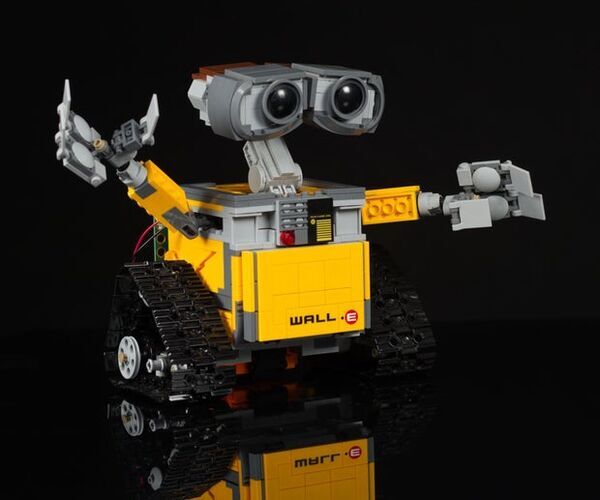
LEGO WALL-E With Micro:bit
"We're using a micro:bit along with a LEGO-friendly Bit Board to control the two servo motors that will allow WALL-E to be able to traverse the dangerous terrain of your living room floor. For the code we'll be using Microsoft MakeCode, which is a block-based code editor that is easy to use. You'll be able to load our code and use it, as well as edit it and customized it to make it your own. This is a great way to experiment by making adjustments and seeing how they change how WALL-E moves. The Bit Board is a new (as of 2020) part of the Crazy Circuits system just for the micro:bit that consists of a large number of components that are LEGO compatible and allow you to build circuits on top of LEGO baseplates and parts. The Bit Board is compatible with V2 and previous versions of the micro:bit as well as the Adafruit Clue development board." [...]
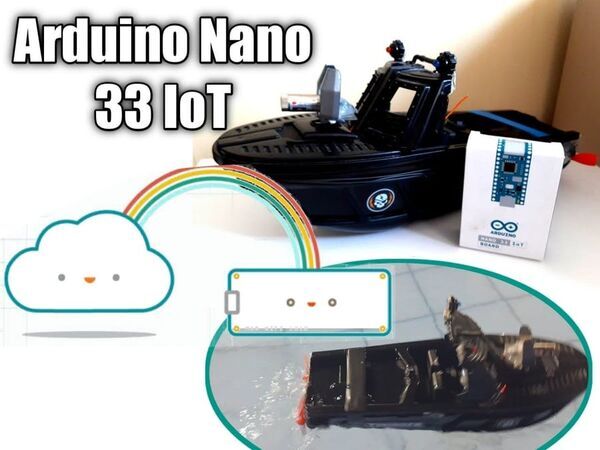
Boat with Arduino Nano 33 IoT on Arduino Cloud
"Double helix boat, controlled by Arduino IoT Cloud with siren, patrol LED and laser cannon. IoT boat connected to the Cloud IoT with Arduino Nano 33 IoT We set up this project to present the Cloud IoT Arduino with the Arduino Nano 33 IoT board and develop the skills of aquatic maker projects, where knowledge of buoyancy in water, movement and tightness are very important. In the video below, there is the presentation of the boat navigating through the control by the dashboard assembled by Eliezer Neto on the Arduino Cloud IoT, we tested the control by making the boat rotate on its own axis and the navigation forwards and turns to the right. The control of forward navigation was to be desired because one engine was spinning faster than the other, thus compromising the route in a straight line, if your project has the same problem it can be solved by software with a PDI code to compensate for the rotation or hardware with a voltage limiter on the motor pole. " [...]
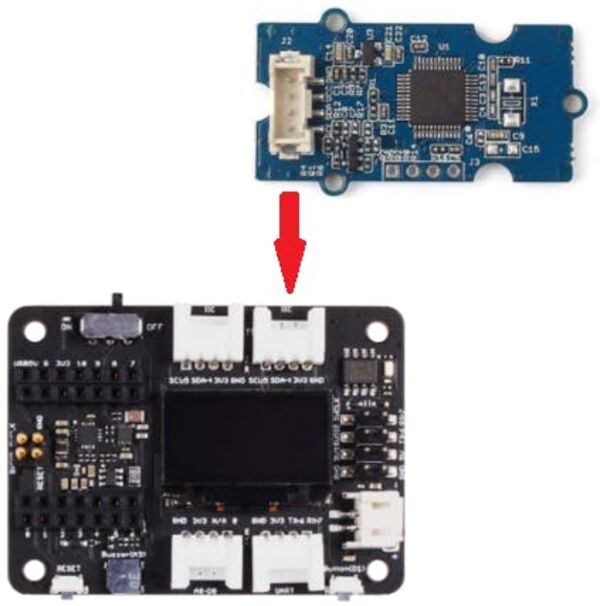
Seeeduino XIAO Expansion Board - Heart Rate
"The Seeeduino XIAO can be a more comfortable device of measuring heart rate. This simple and inexpensive project is based on the Seeeduino XIAO expansion board to report the heart rate. the device used has an I2C two-wire interface and therefore keeps the wiring down to a minimum. " [...]

Flame the Candle by Snapping Your Finger
"Hi guys, we will make an interesting project in this project. We will try to make a flame by snapping our finger.Let's get started on the project. First, let's create a prototype. I will use Arduino Nano for this project. You can use any Arduino model you want. The source codes will work on all of them." [...]
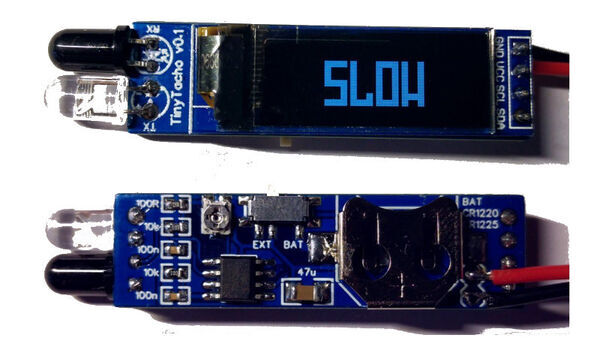
TinyTacho - Simple RPM-Meter based on ATtiny13A
"Recently Great Scott built his DIY version of a tachometer which I thought was very cool. But using an ATmega for this job, I found a bit overpowered. So I tried to force all tasks (measurement, calculation, I²C protocol and OLED display) into the huge 1KByte memory of an ATtiny13A. " [...]

The Retro-Geek Plywood Box
"This project started as a gift for a friend and his newborn baby. I wanted something simple and that could deliver emotions by the simplest way. Colors and light are the best vectors of that, don't you think ? This is the Retro-Geek plywood Box. Tools A CNC cutting machine ; Endmill bit : Ø 4mm, straight 2 flutes ; A soldering iron ; 4x Bolts Ø 6mm, lenght : at least 30mm, any type of head ; Glue (multi materials) or hot glue ; Tea or coffee or Pepsi Max or other product with similar effect. Supplies Plywood, thickness : 15mm ; HDF (High density fiber, I use the brand Valchromat) or MDF, thickness : 19mm ; Acrylic sheet, thickness : 3mm ; An Arduino Nano ; A ring of LEDS WS2812 ; Electrical wires ; 2x potentiometers." [...]

CO2 Display
"As its name suggests, the CO2 Display project is a small CO2 gas sensor to be plugged into USB to easily track indoor and outdoor pollution. The CO2 level is displayed live, but it is possible with the small application provided in the documentation to generate capture samples in image (in png format) and in list file (in csv format). To better interpret the data here is a table of the PPM scale (unit of measurement of CO2). To make this sensor we opted for the MZ-H19B sensor, relatively inexpensive, compact, reliable in its measurements and with a lifespan of more than 5 years, it seemed to us that this sensor was the most suitable for our use as a portable sensor. To mount the sensor you will need to purchase the following list of equipment: - MZ-H19B CO2 sensor - Arduino Nano microcontroller (with USB cable) - 7-segment display TM1637 - 10 Prototyping cables female <> female jumpers. - 40g of PLA for 3D printer - (Optional) 50x50mm of 3mm plywood." [...]

Payment Terminal for the Visually Challenged
"Aim of this project is to improve the experience of the visually challenged, while making cashless transactions in public. What is a payment terminal?A point of sale terminal (POS terminal) is an electronic device used to process card payments at retail locations.Nowadays payment terminals are used almost everywhere to accept digital payments / transactions in local stores, coffee shops, hospitals, hotels, etc. Supplies: Arduino UNOU RFID reader (generic) 4 * 3 Keypad Headphones Light Dependent Resistor SD card Hot glue gun (generic)" [...]
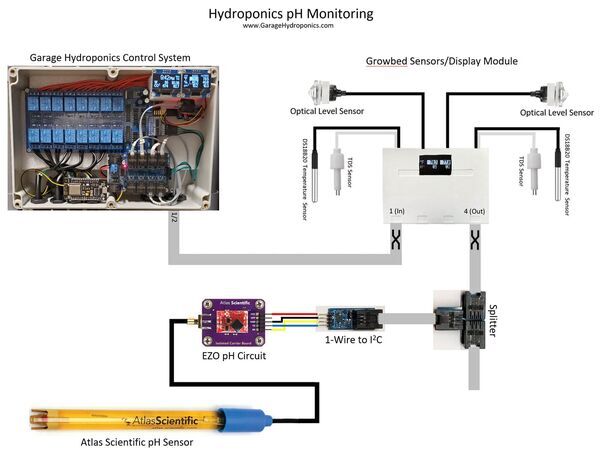
Professional Hydroponics pH and DO Monitoring
"Build a monitoring system that will measure your pH and DO levels. The ideal pH range for most hydroponic systems is between 5.5 and 6.5. pH is important because it affects the availability and absorption of the elements needed for plant growth. Oxygen is an essential plant nutrient and plant root systems require oxygen for aerobic respiration, an essential plant process that releases energy for root growth and nutrient uptake. In aeroponics systems, the oxygen supplied for plant root uptake is provided mostly as dissolved oxygen (DO) in the nutrient solution as well as a zone of aeration provided by a gap from the surface to the reservoir water level. The effect of temperature of the solution on the DO levels and on root respiration rates also needs to be taken into account. As the temperature of your nutrient solution increases, the ability of that solution to hold DO decreases." [...]

Weather Station Using Public Web Service Using Meadow
"Learn how to connect your Meadow to your local network and get current weather conditions from a free public weather web service. The purpose of this project is to learn how to connect your Meadow device to your local network, and send GET requests to a public free weather web service periodically to show the forecast, outdoor and indoor temperature (with an analog temperature sensor) in a TFT SPI display. Meadow.Foundation a platform for quickly and easily building connected things using.NET on Meadow. Created by Wilderness Labs, it's completely open source and maintained by the Wilderness Labs community. If you're new working with Meadow, I suggest you go to the Getting Started w/ Meadow by Controlling the Onboard RGB LED project to properly set up your development environment. " [...]
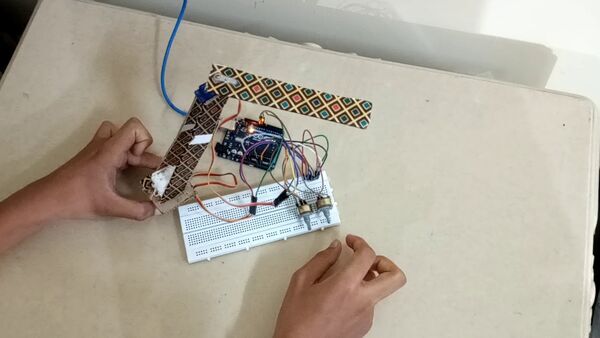
Robotic arm 2 axeled
"Robotic arms are having wide use in industries so I decided to make 1 for me using servo motors and potentiometers. Robotic arms have wide use in industries so, I decided to make 1 using servo motors I have used 2 servo motors one at the bottom of robot to move it 180 degrees and then I have used other servo at the top so that it can move left and right both 90 degrees.I used powerful glue for this called as resin & hardener combi-glue. This is quite cheap and once attached it is really a tough joint ! " [...]
That's all Folks!



